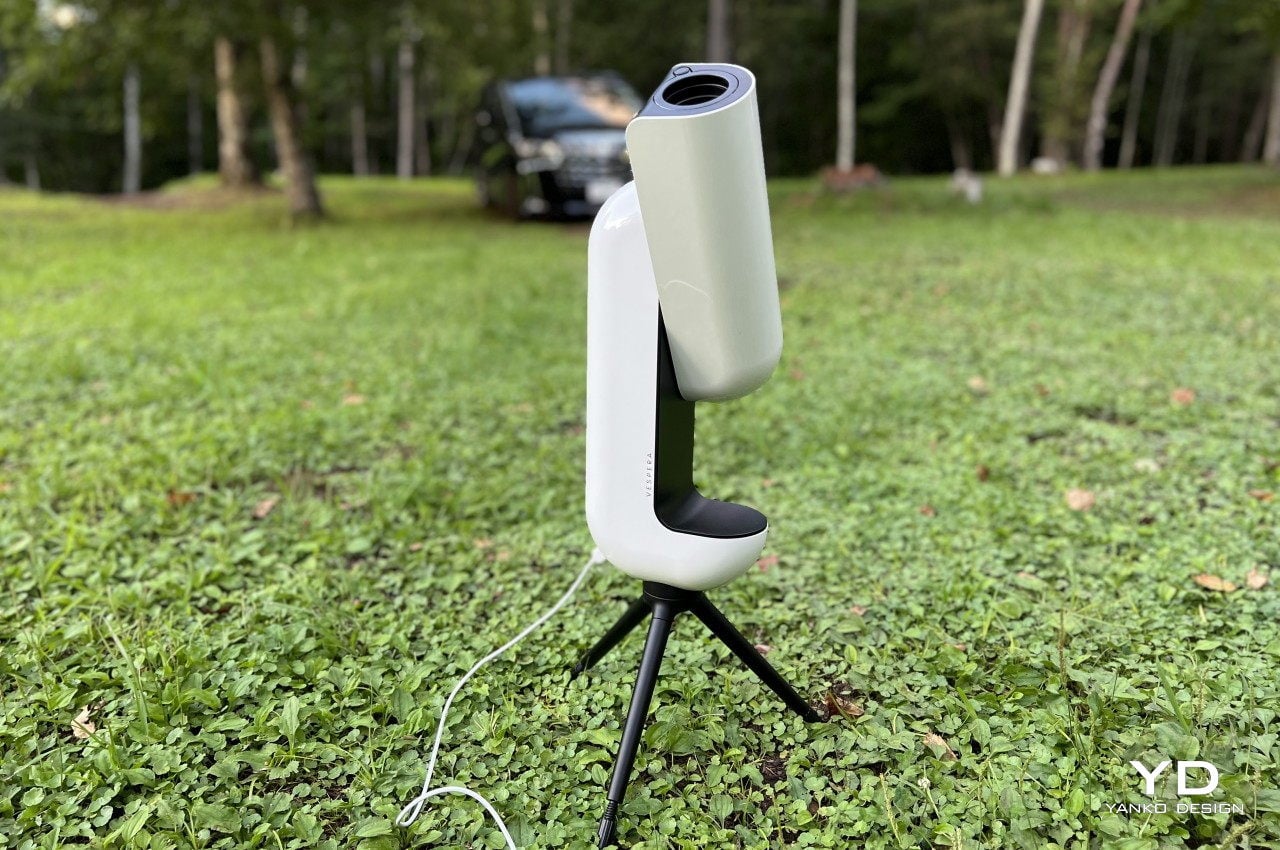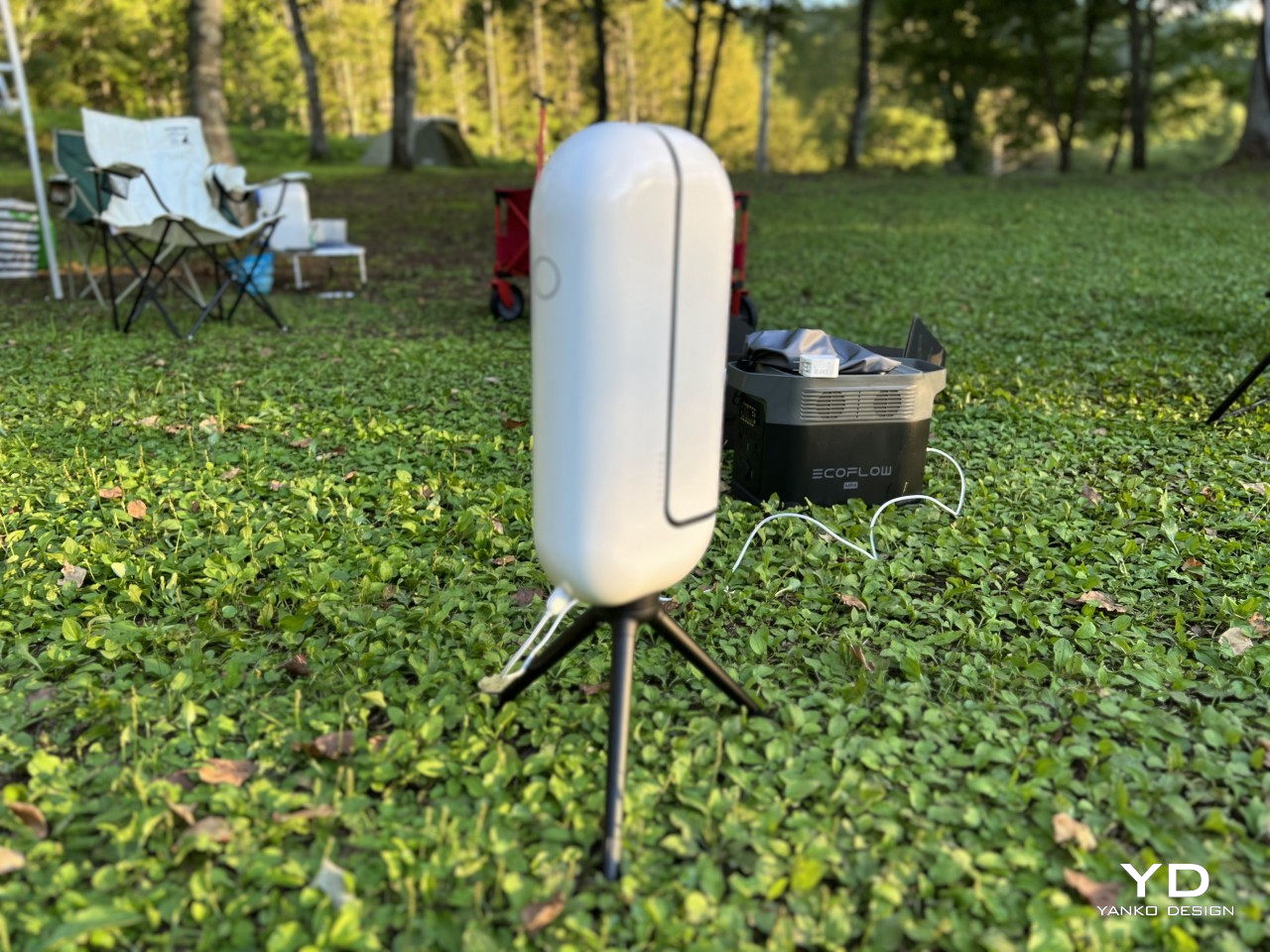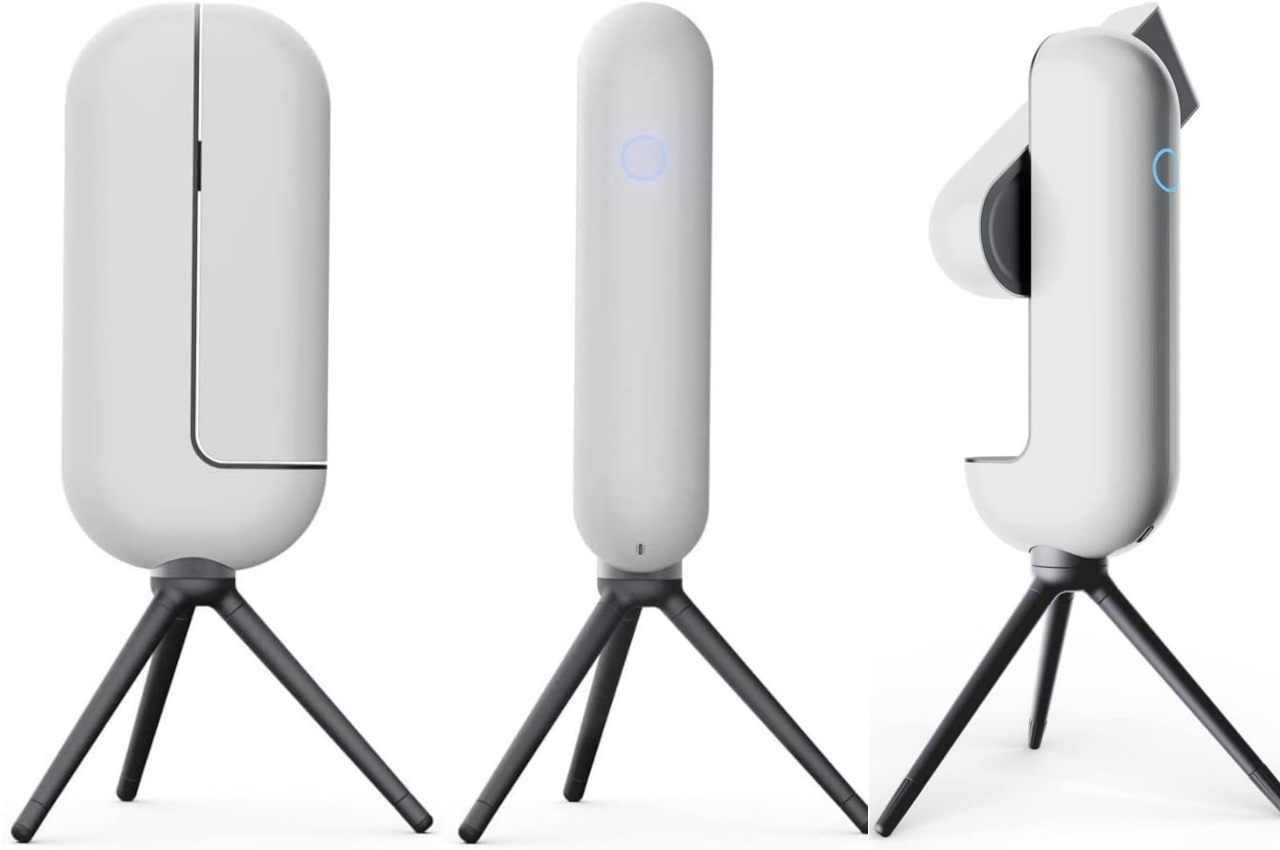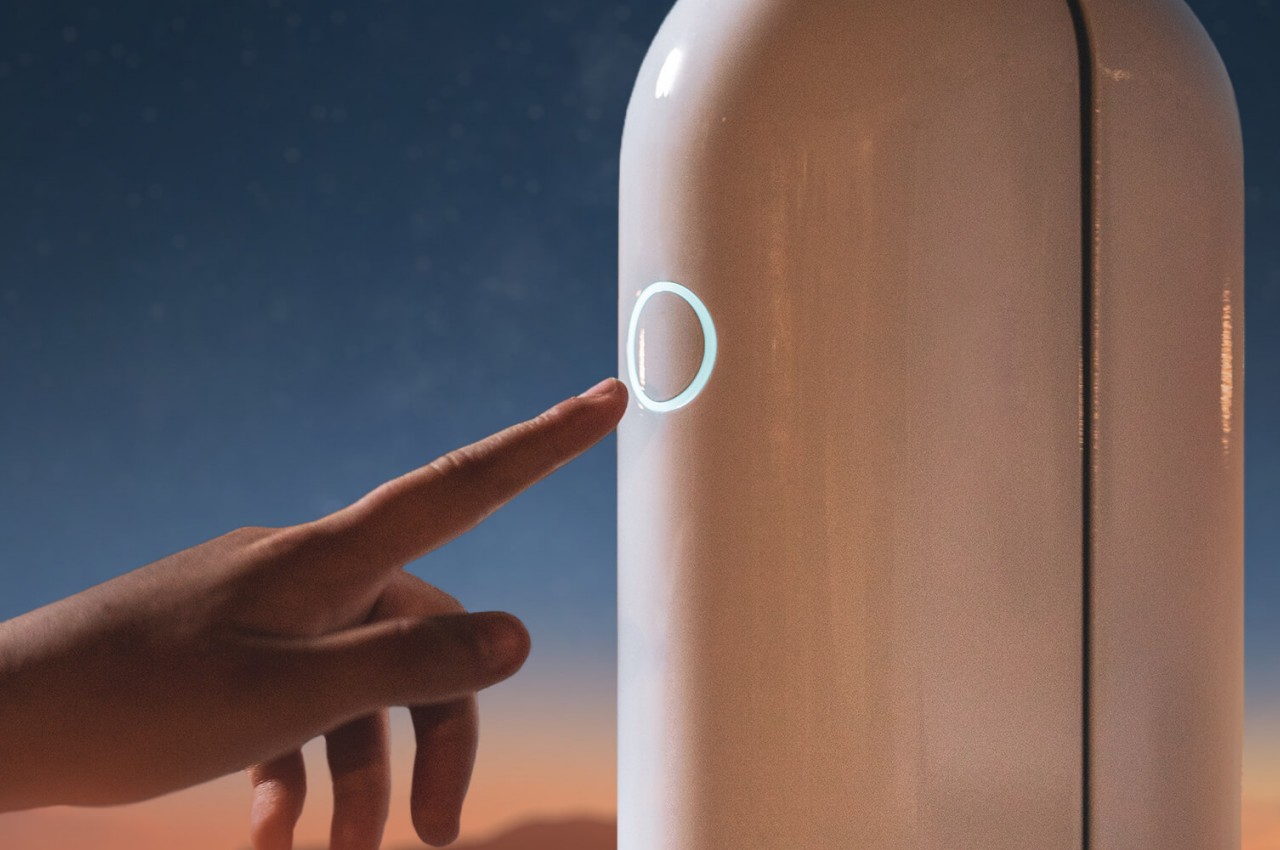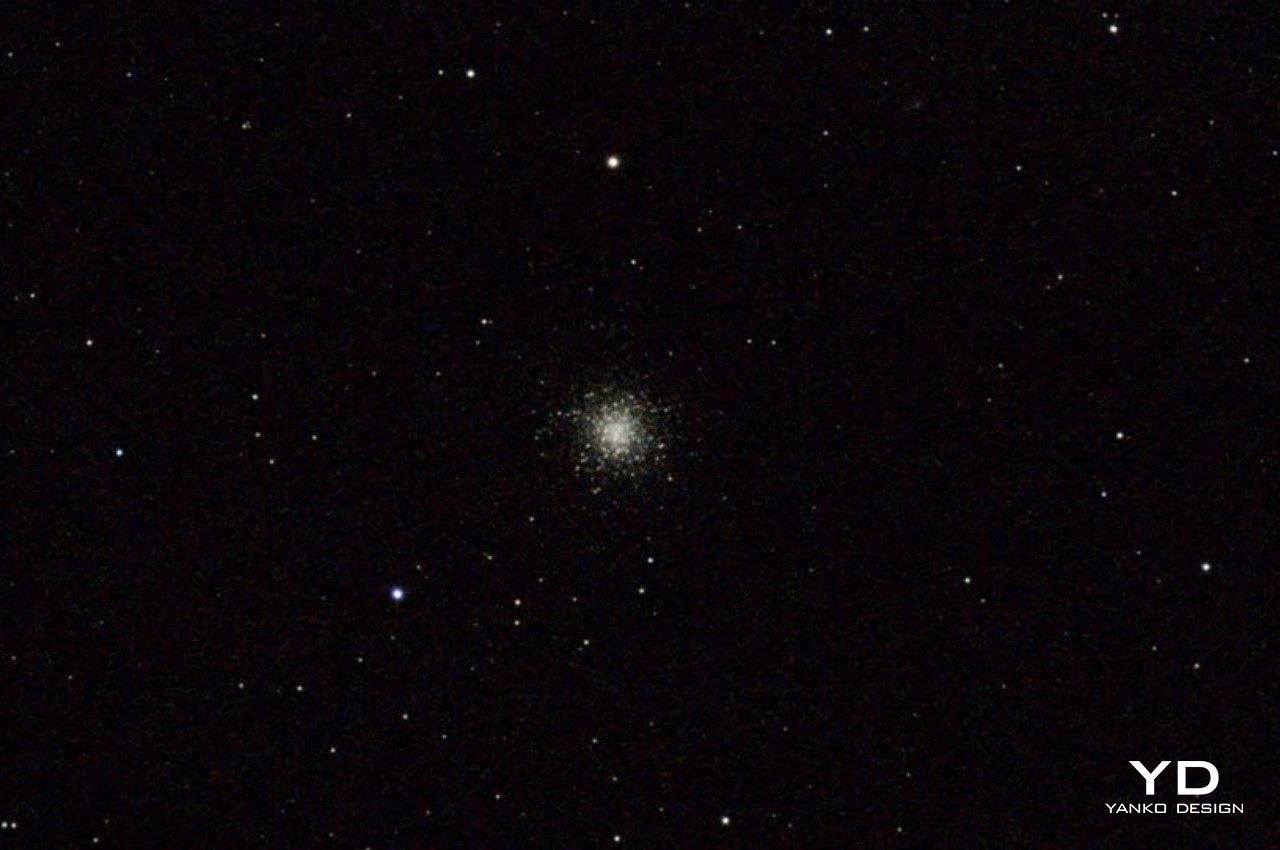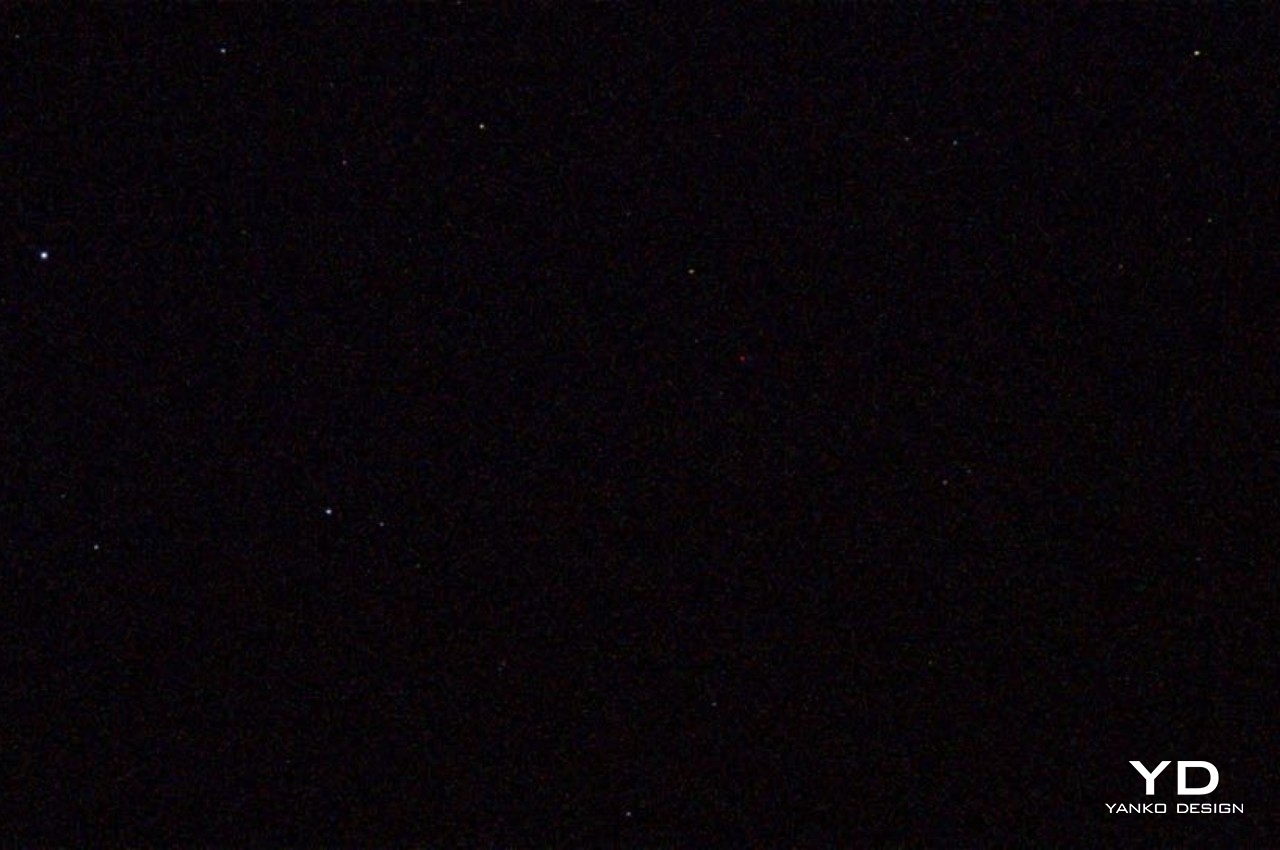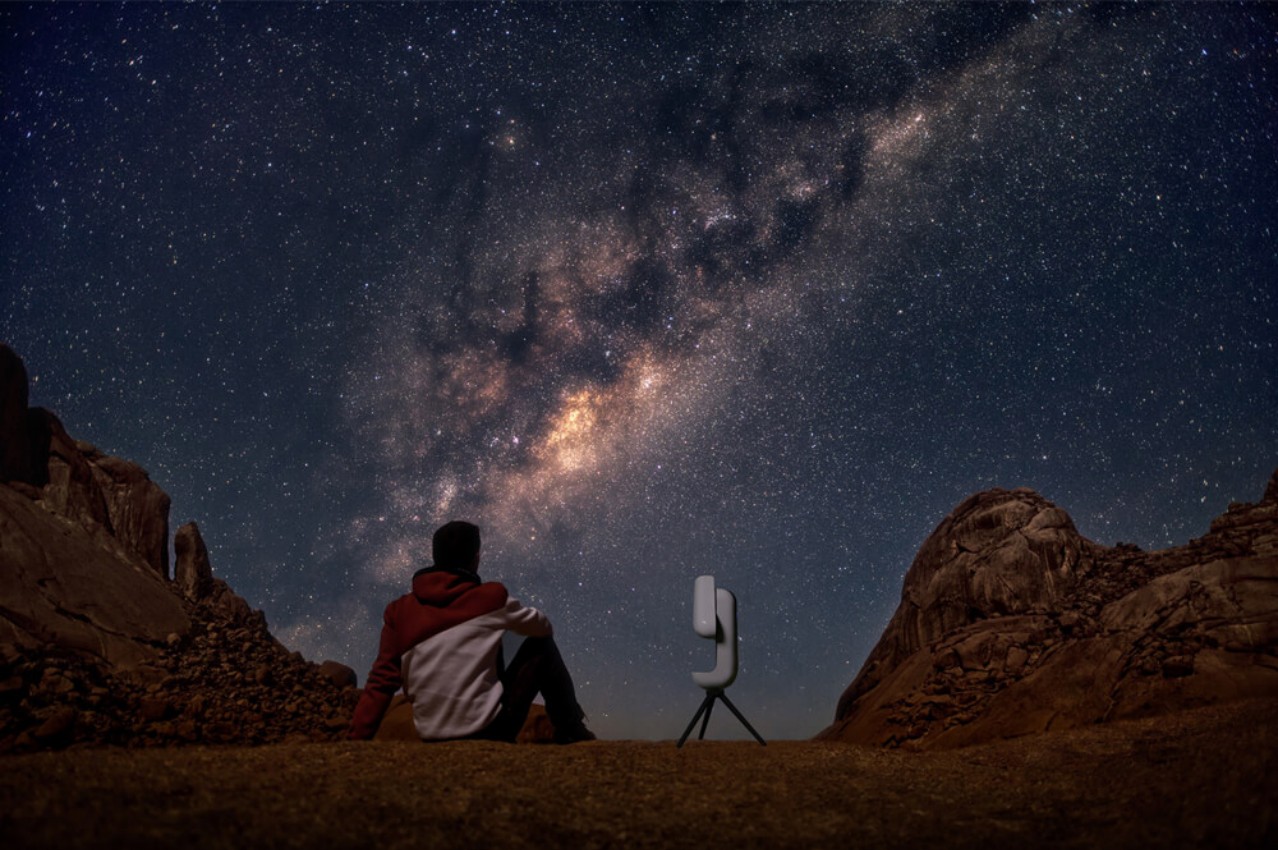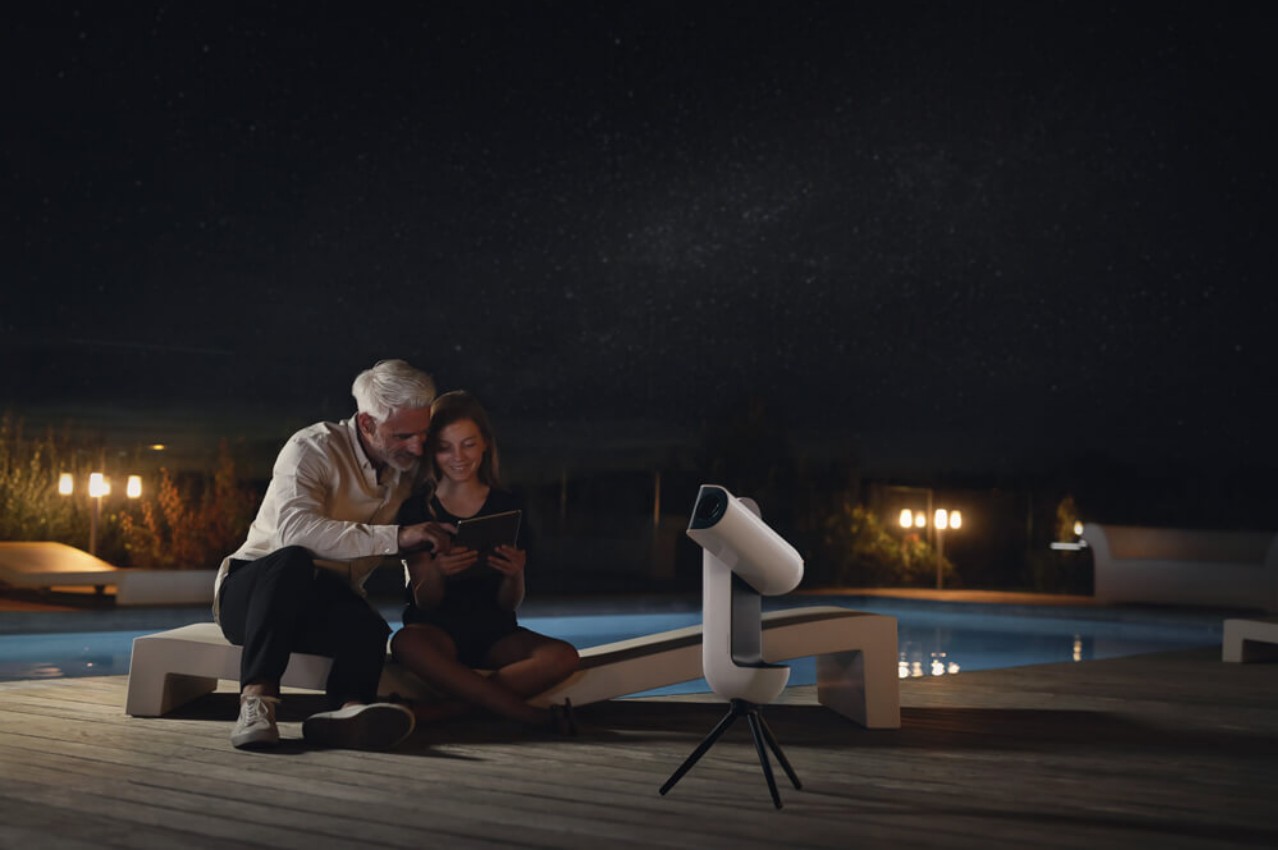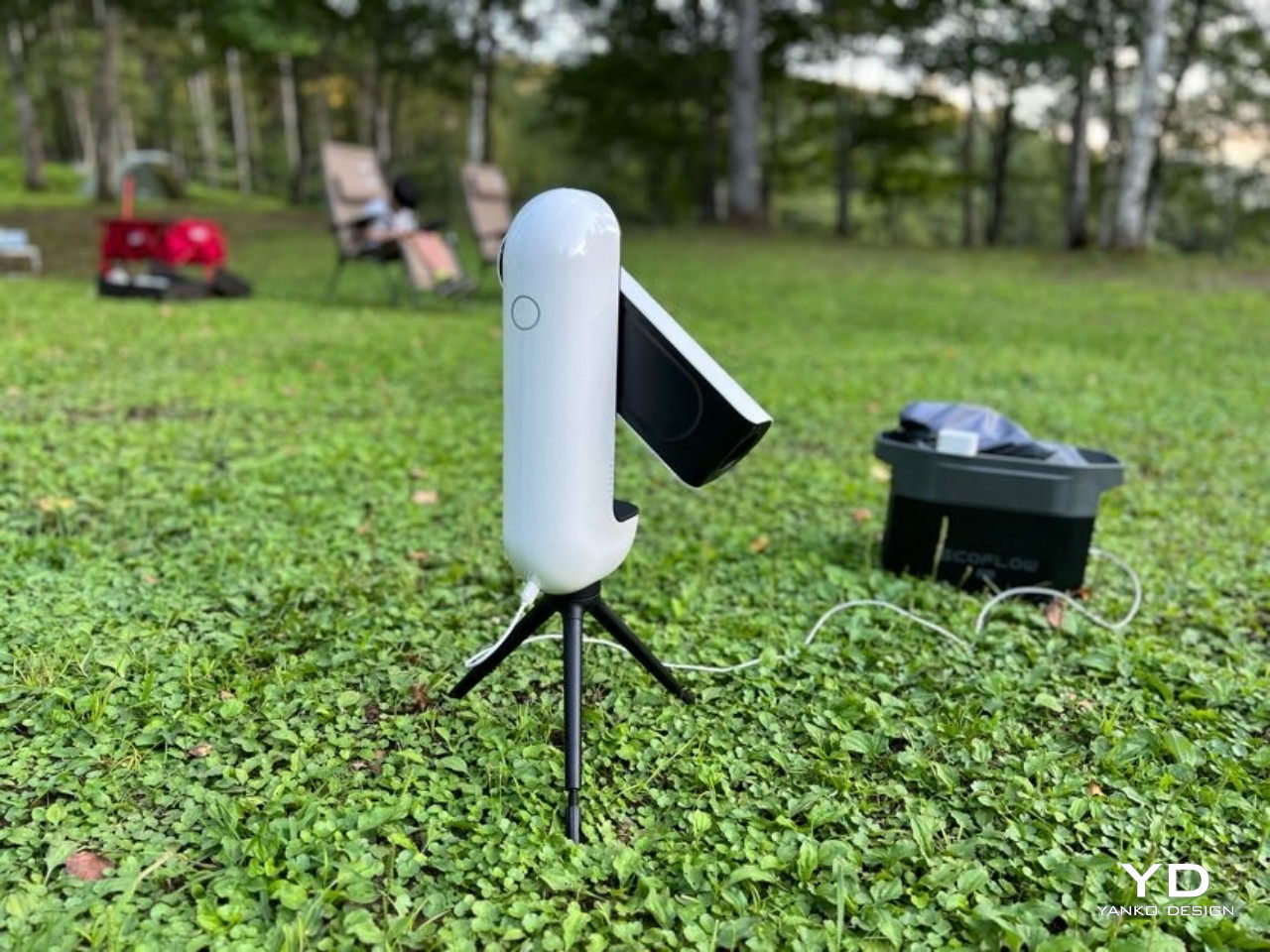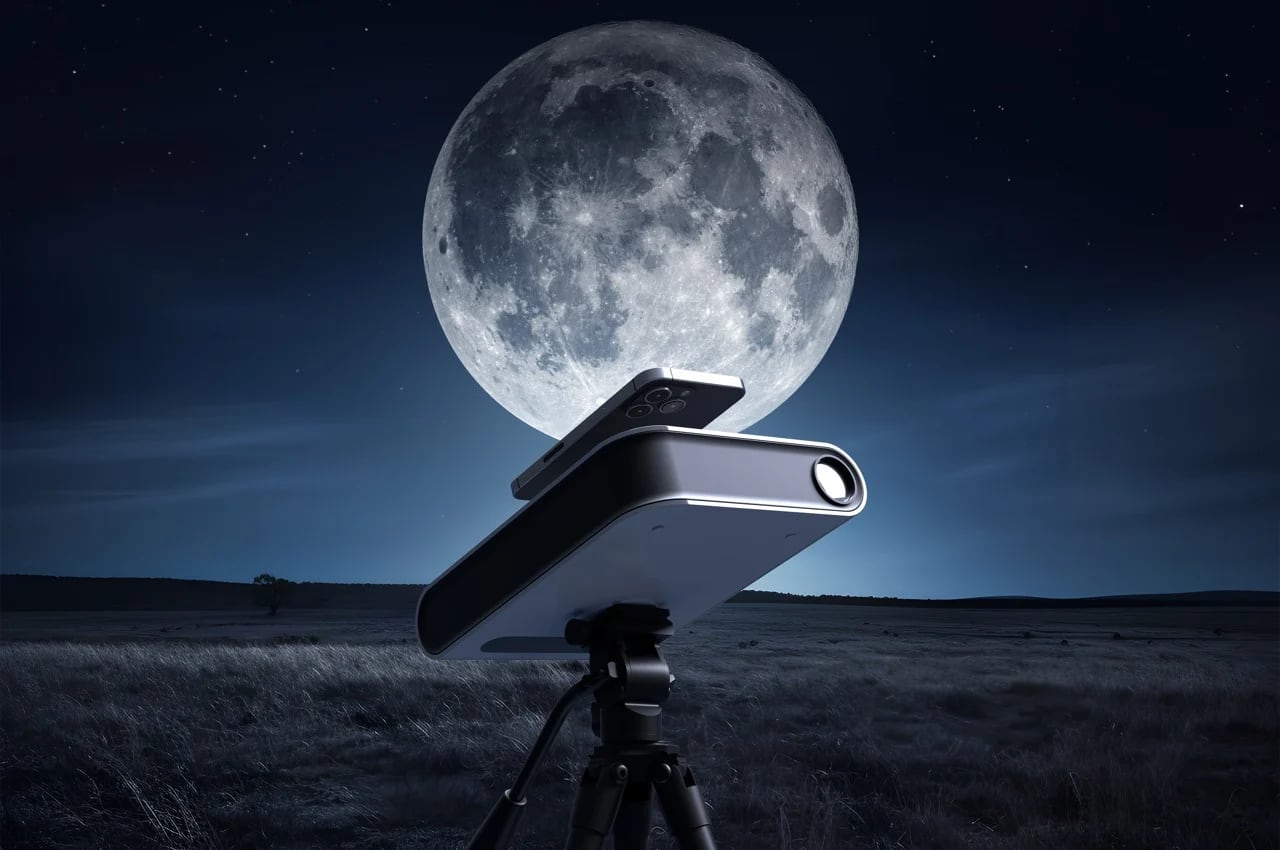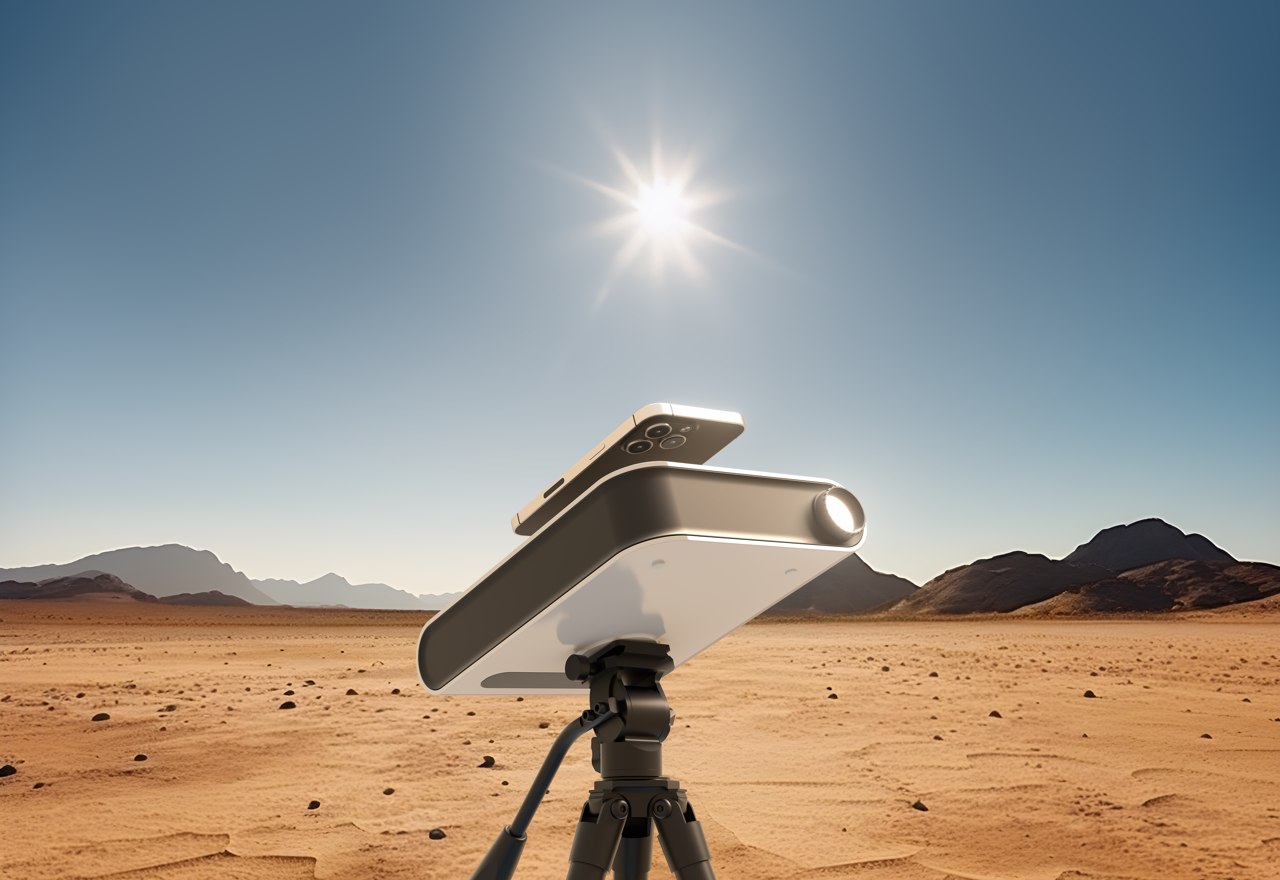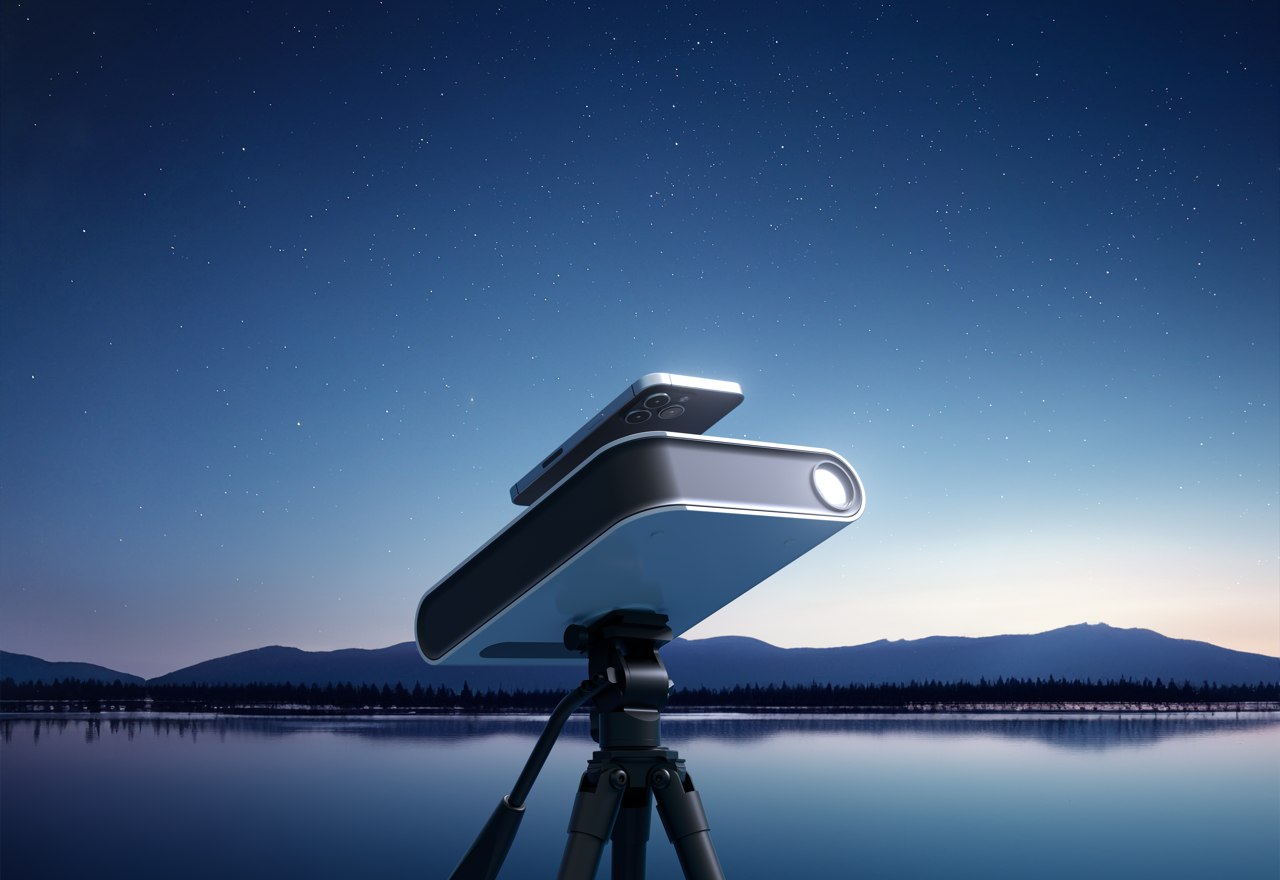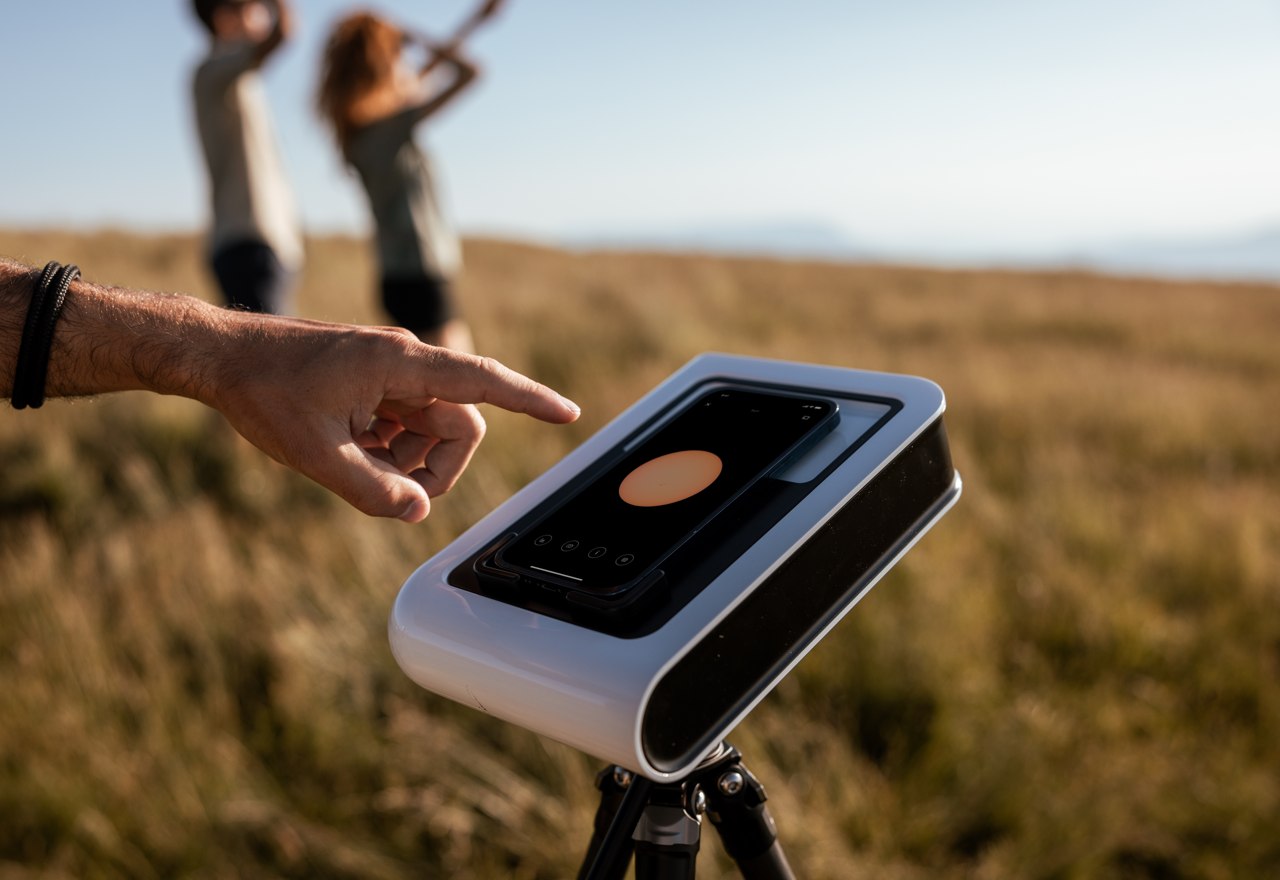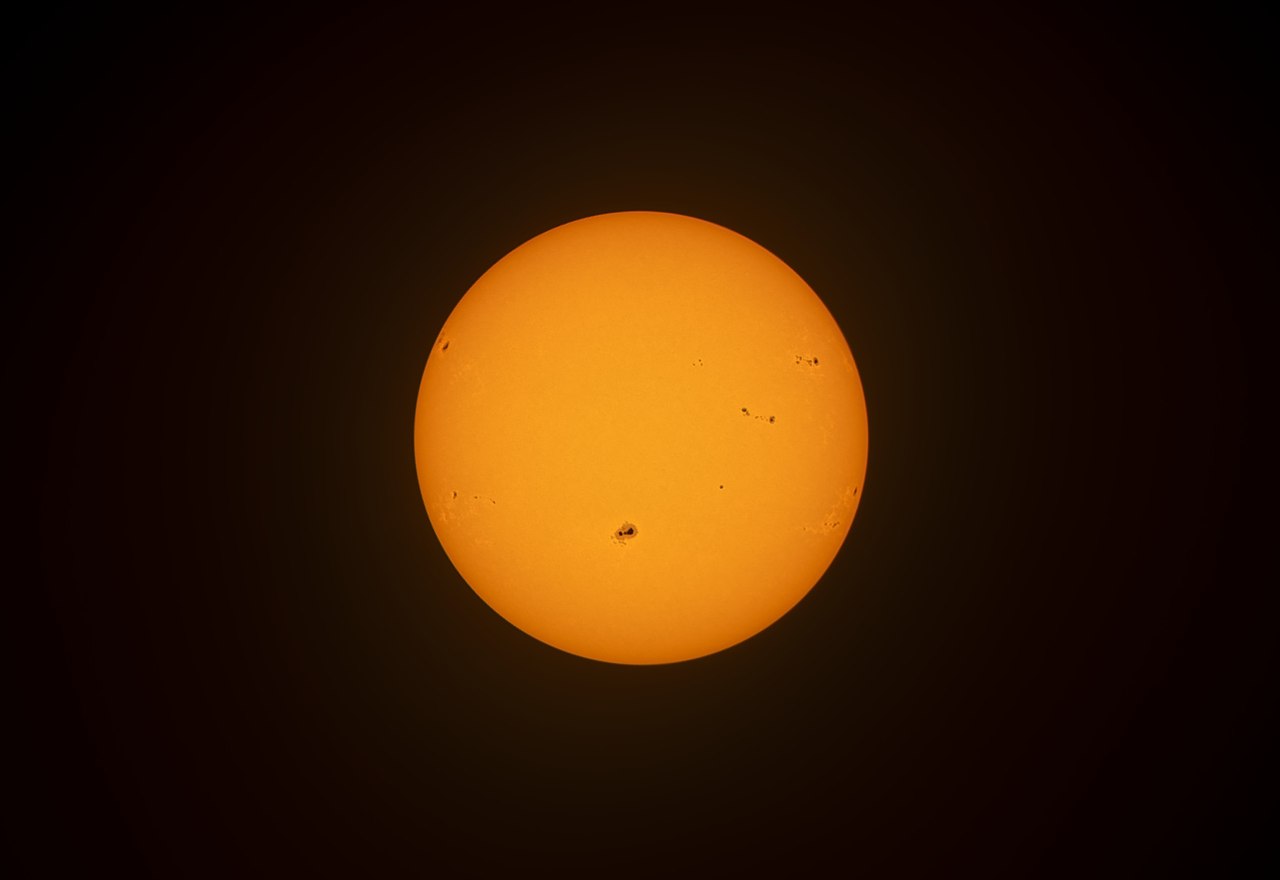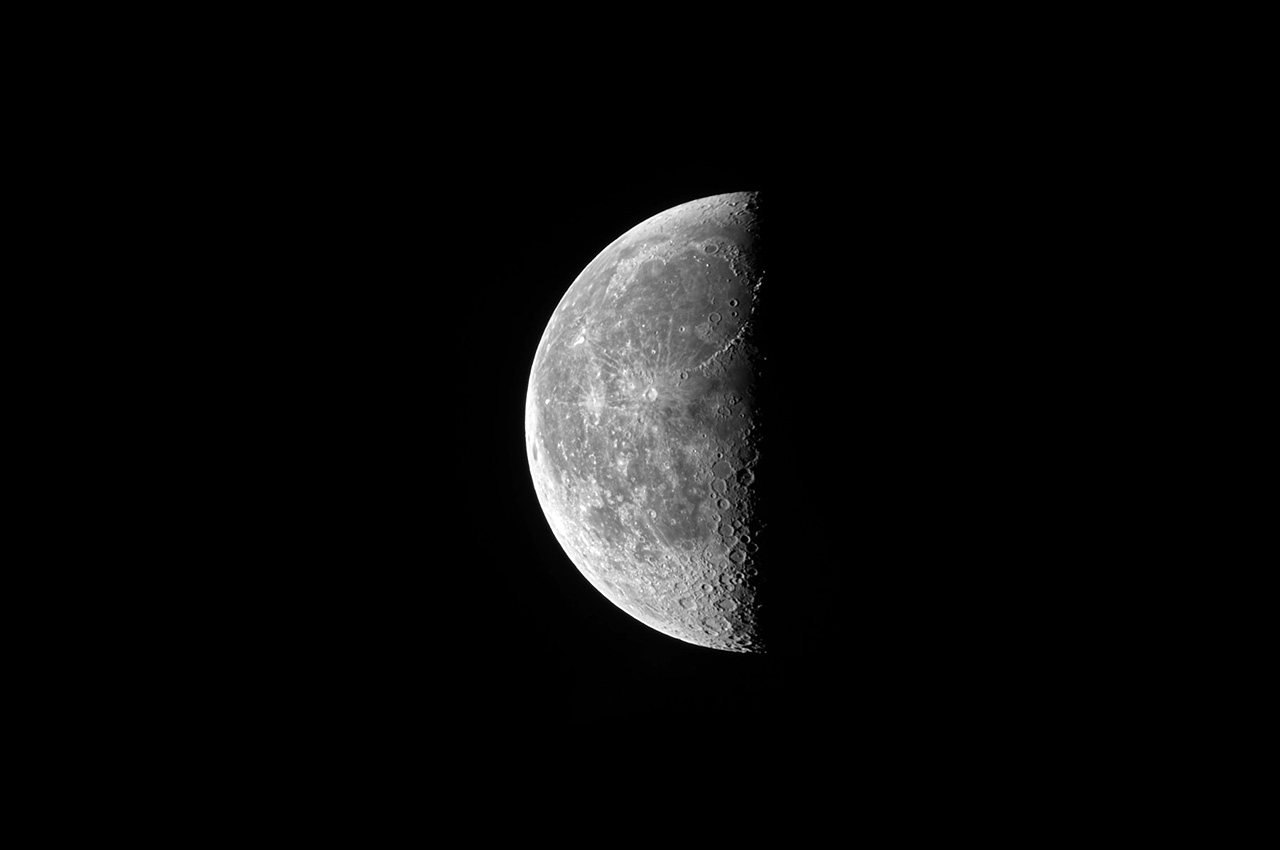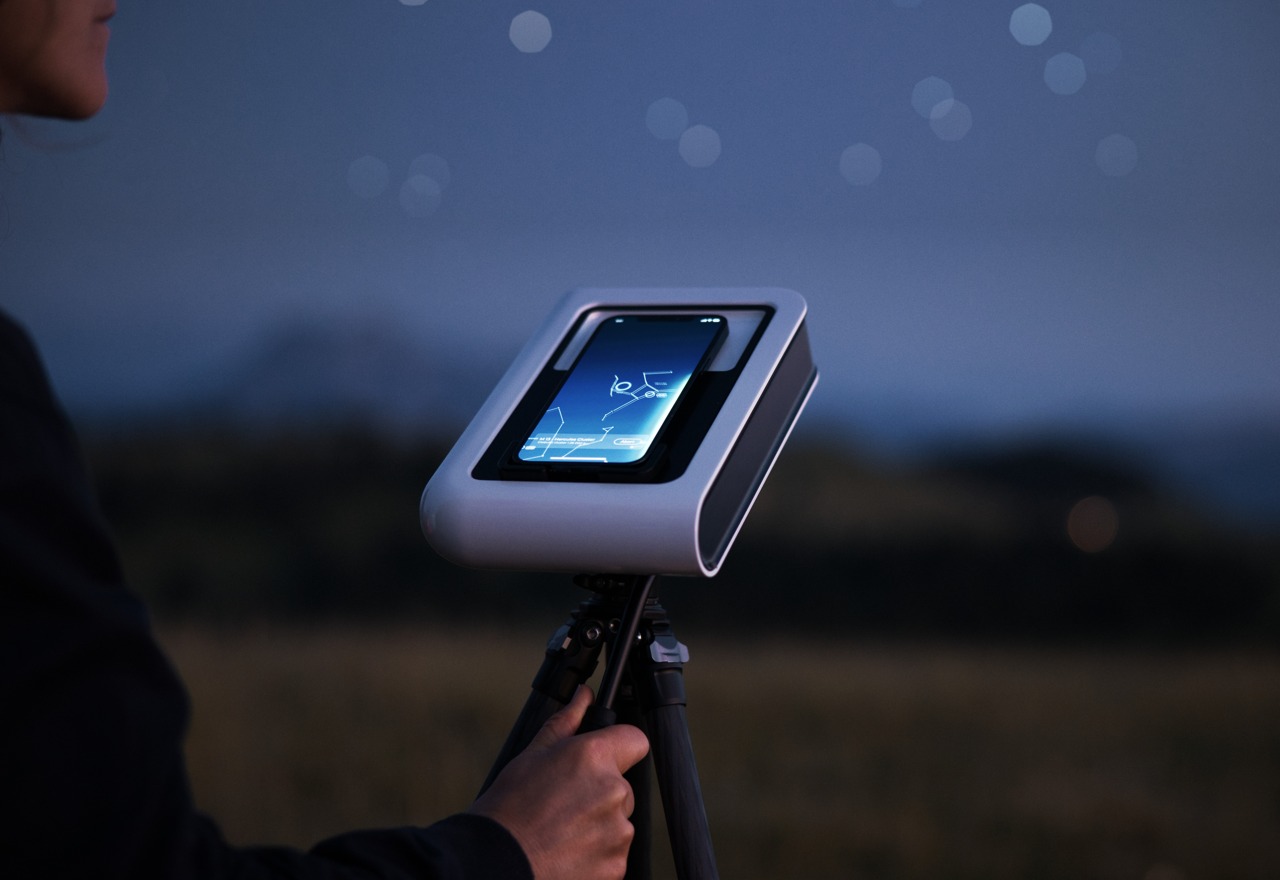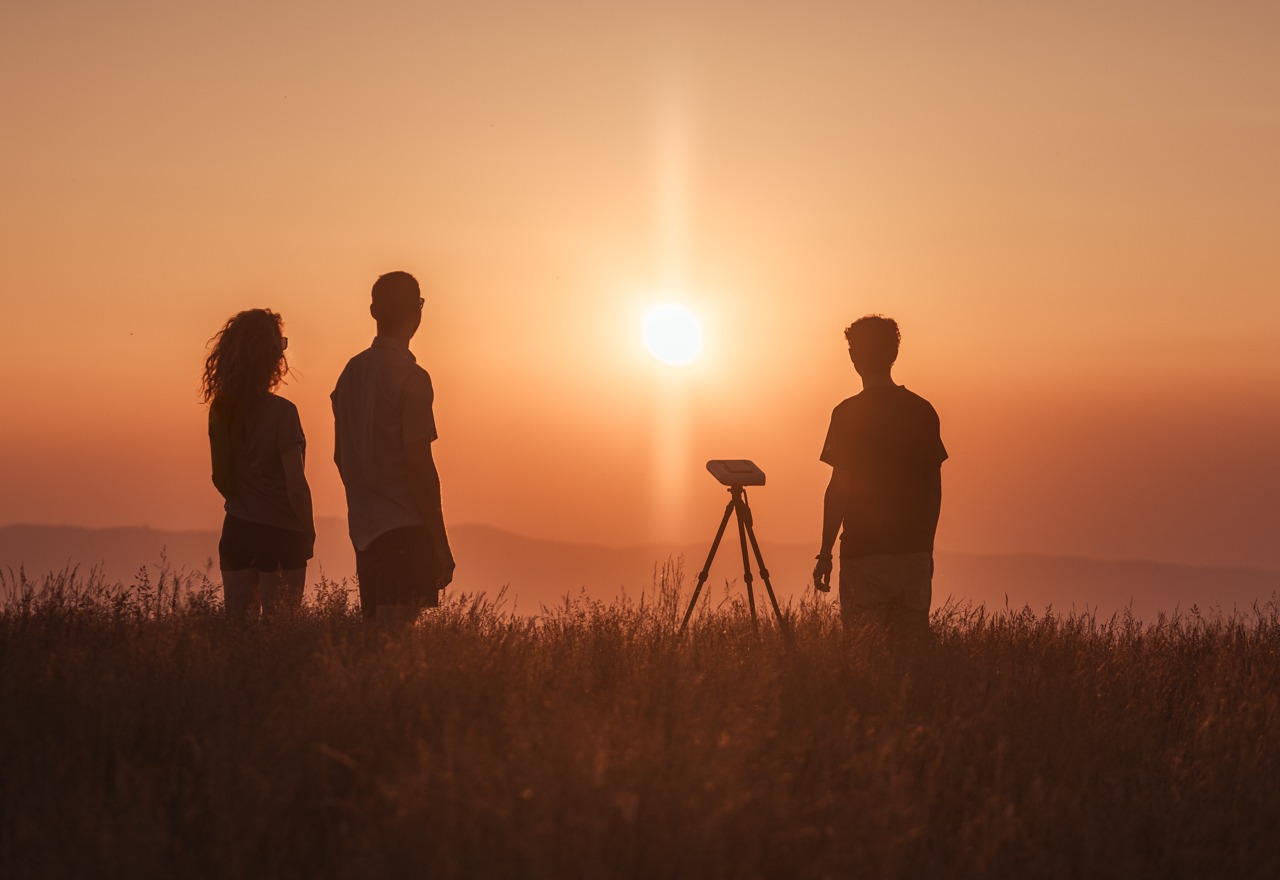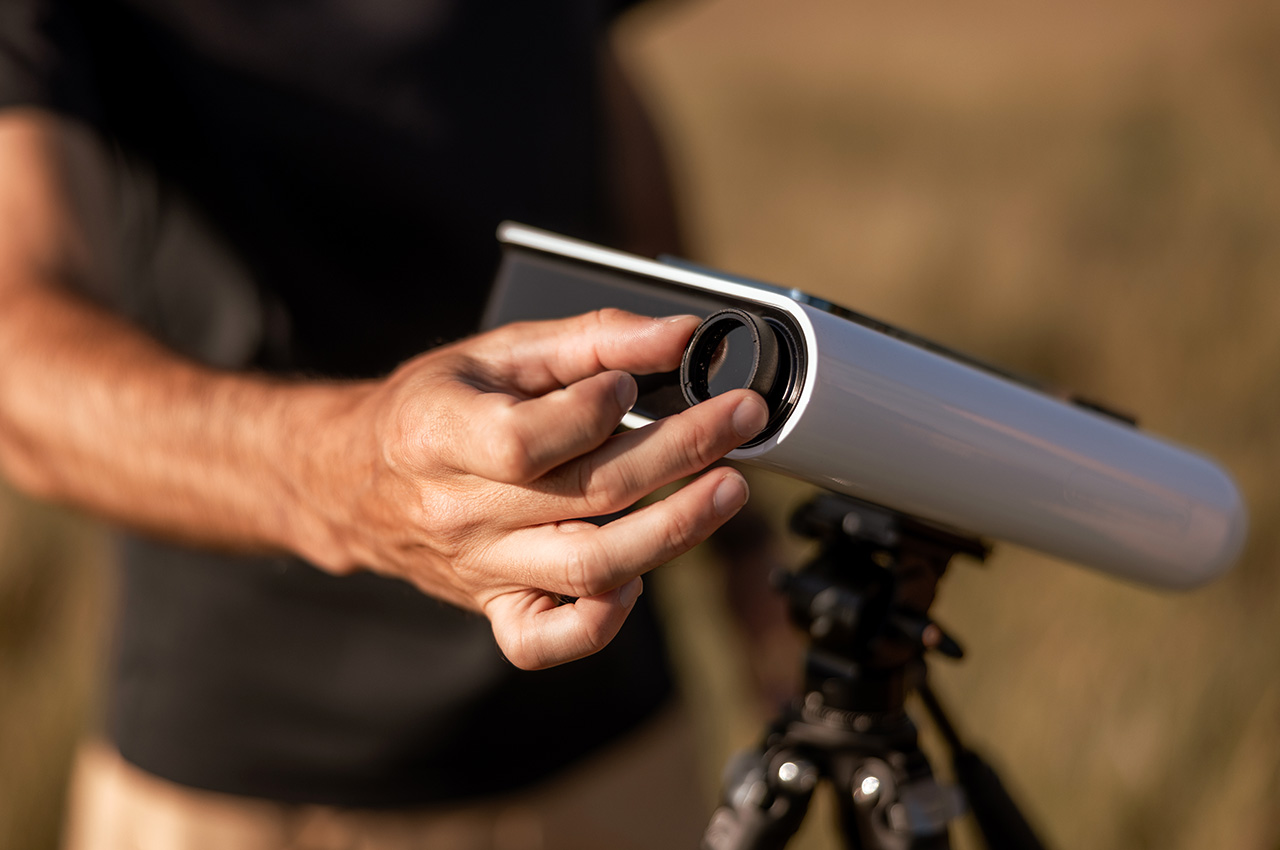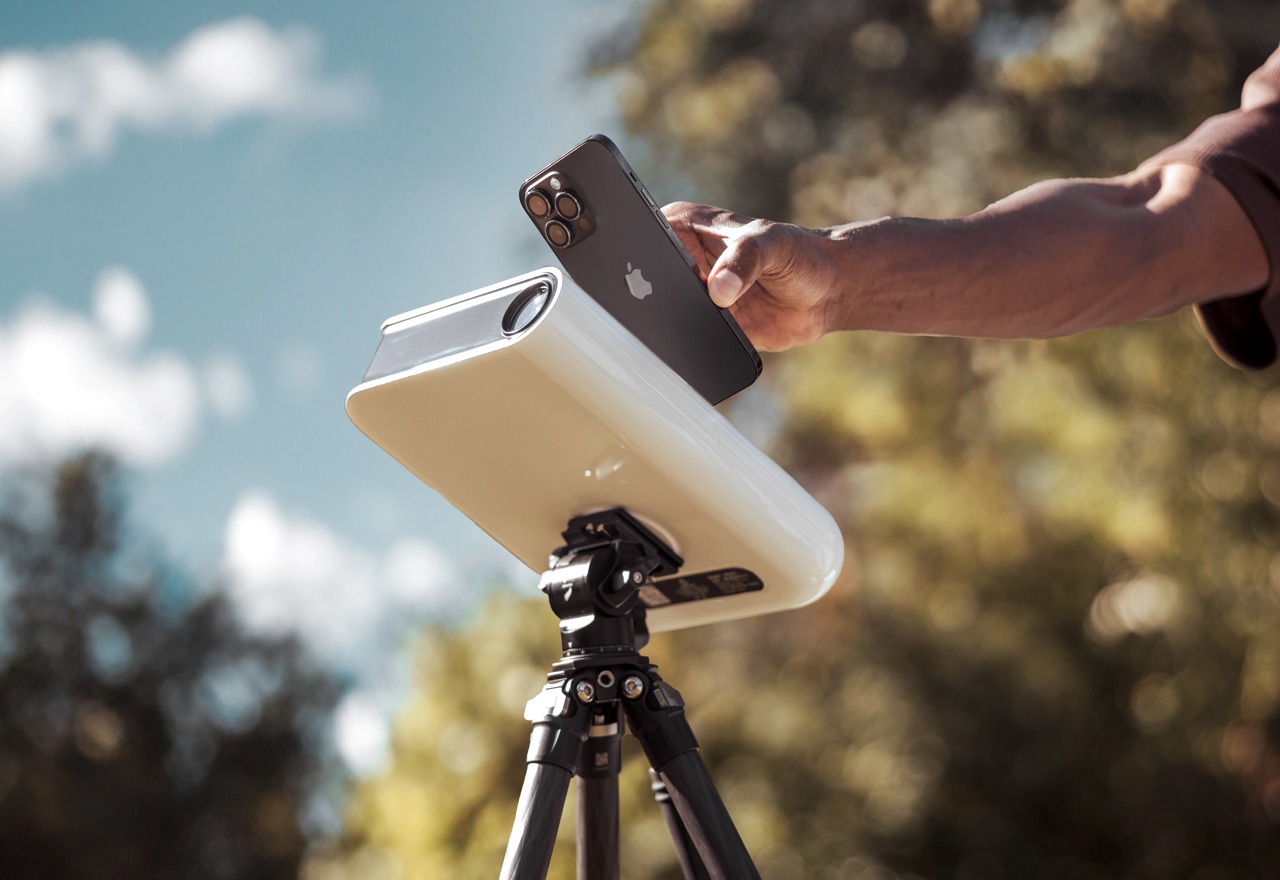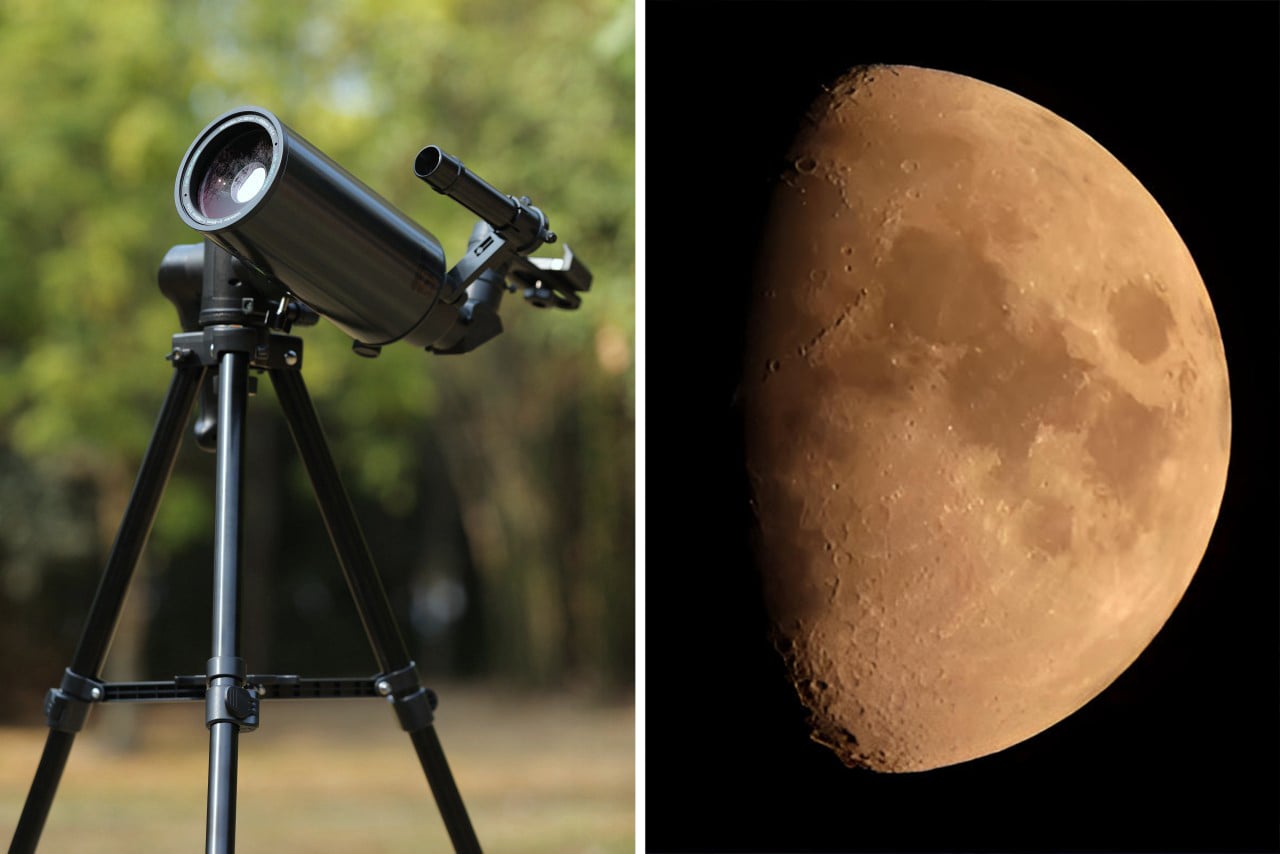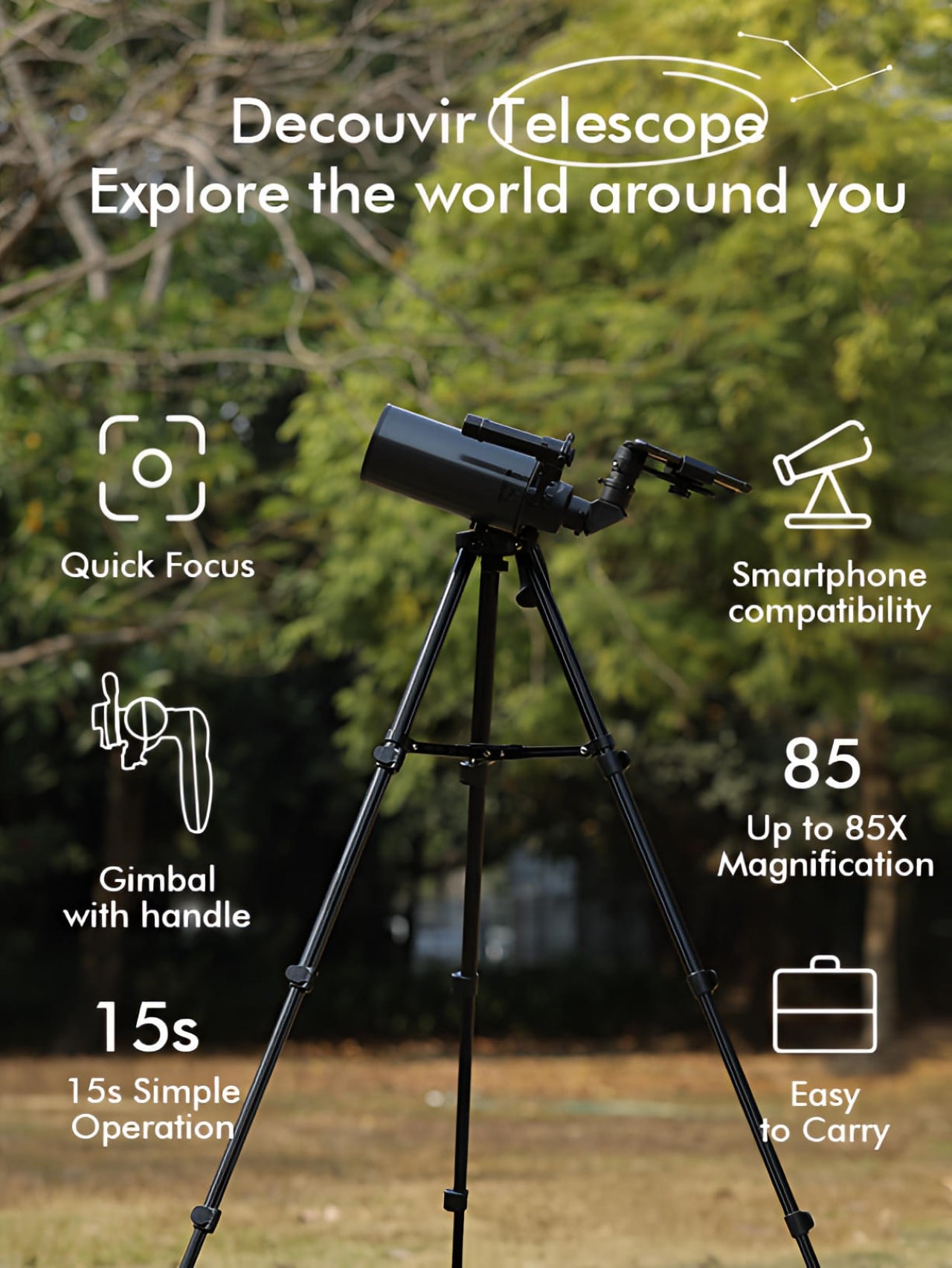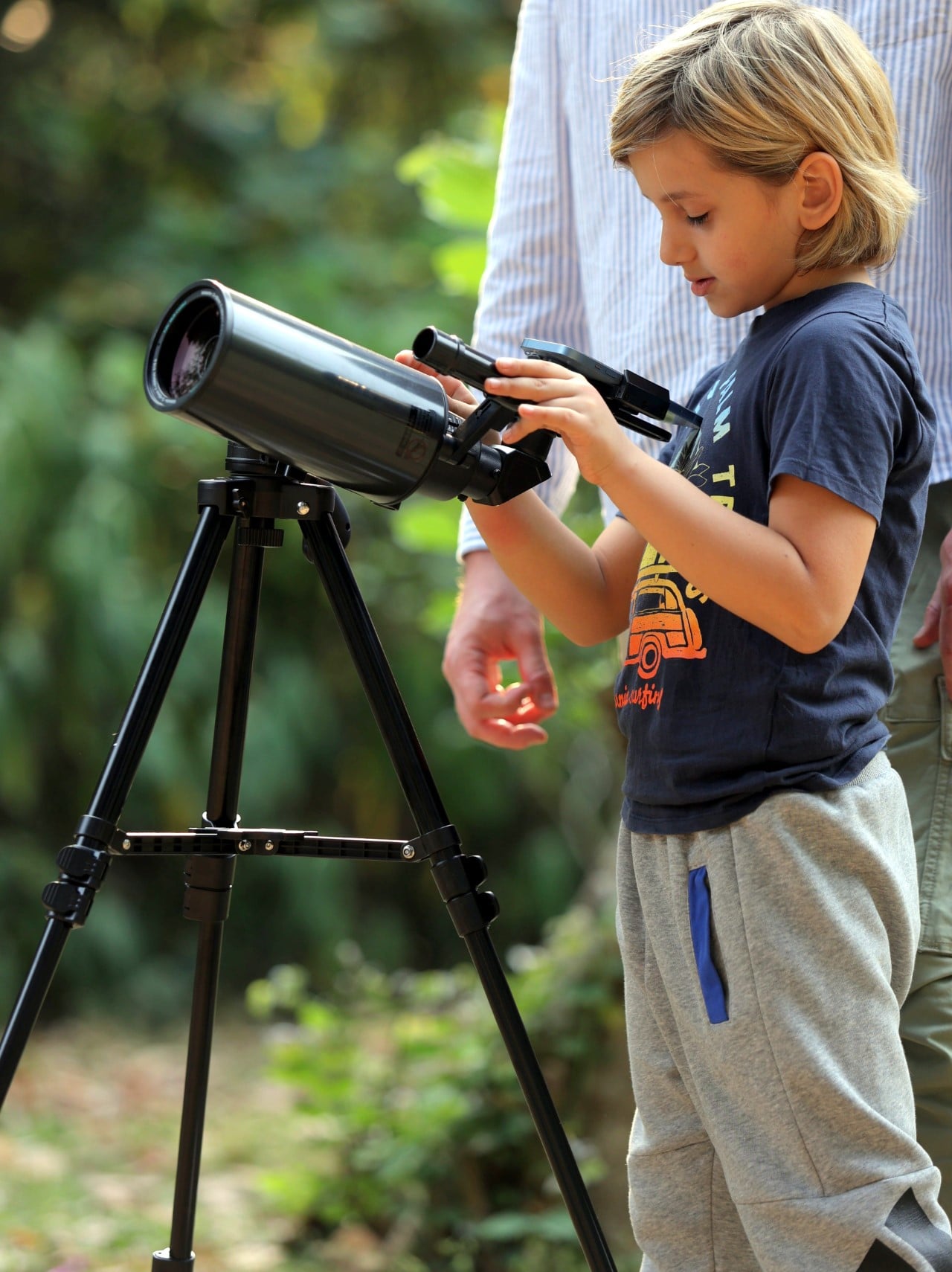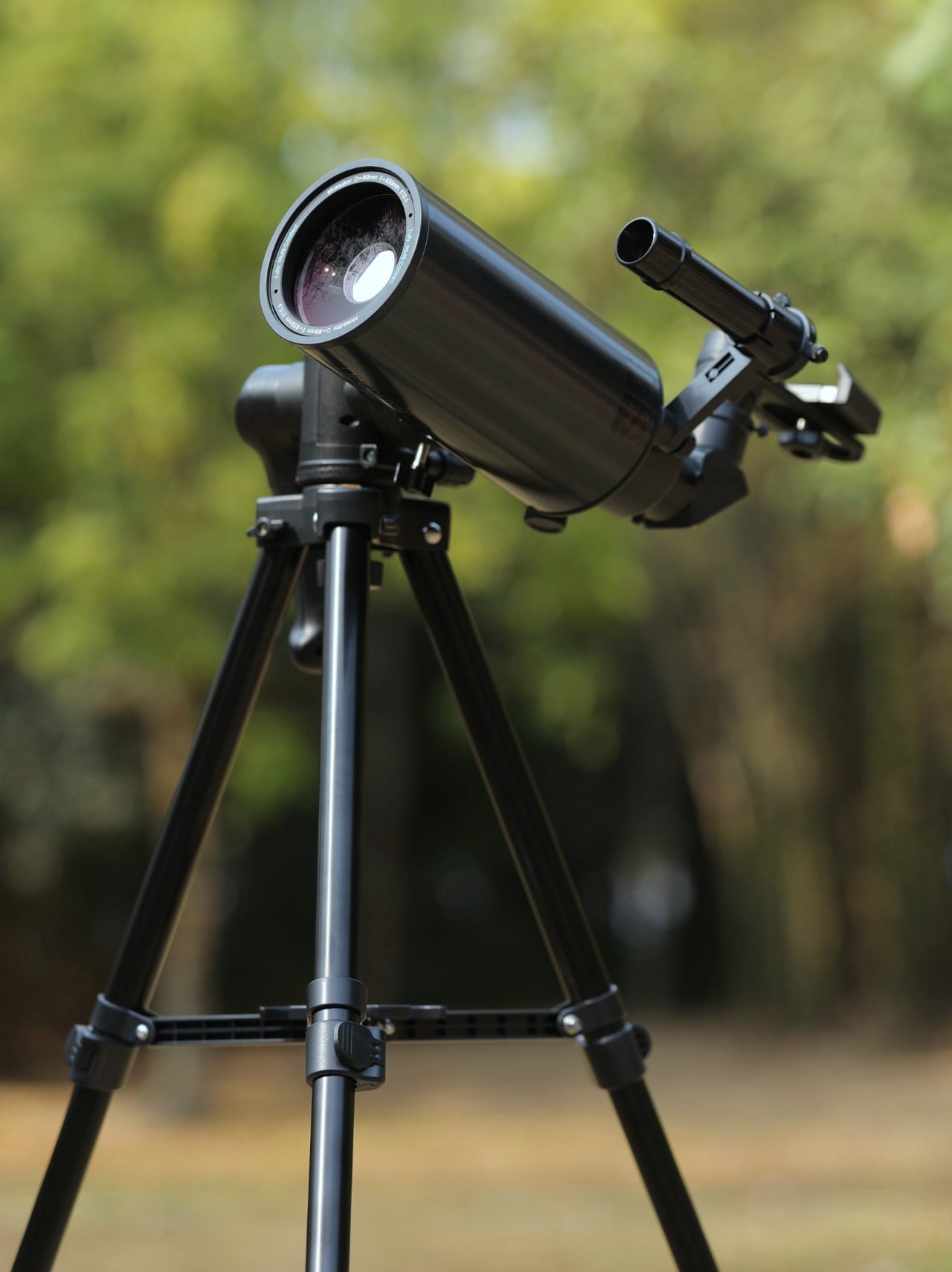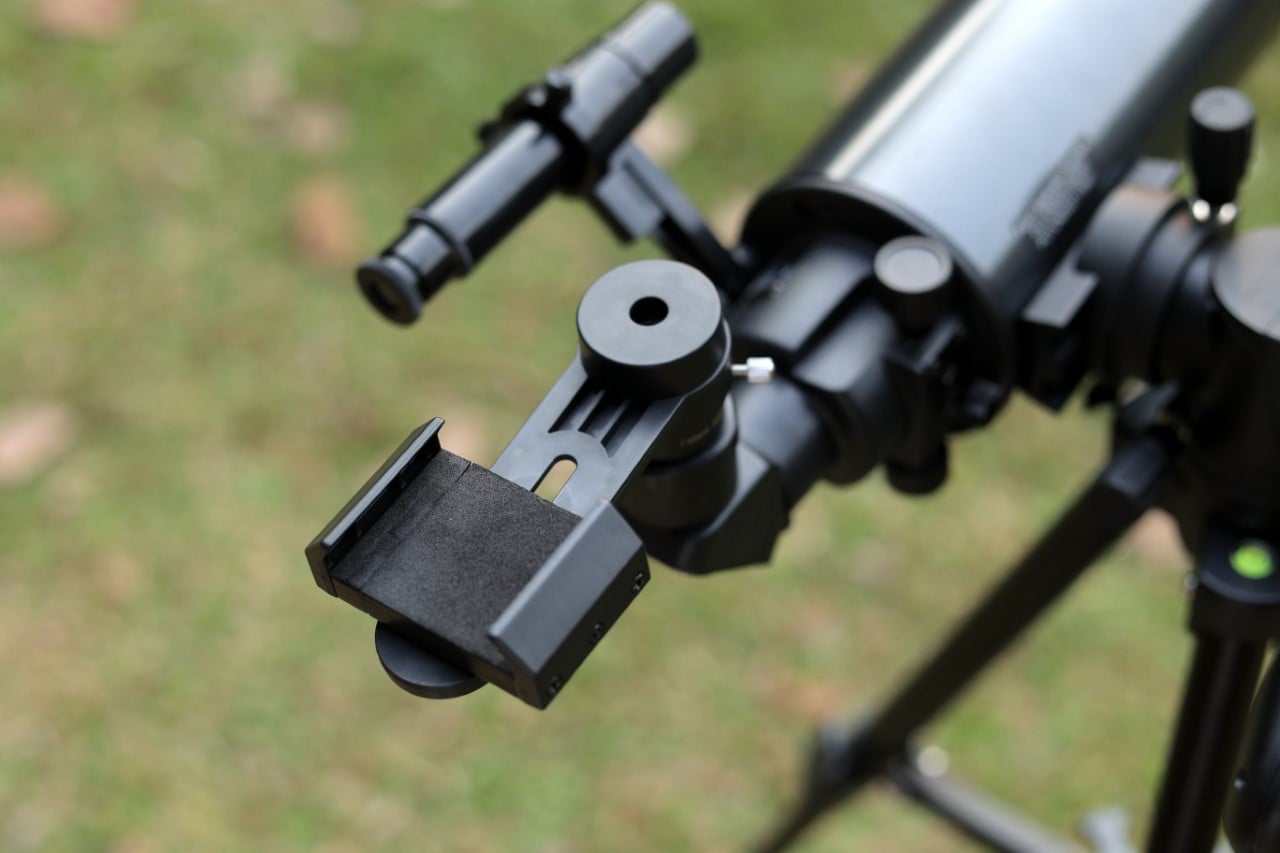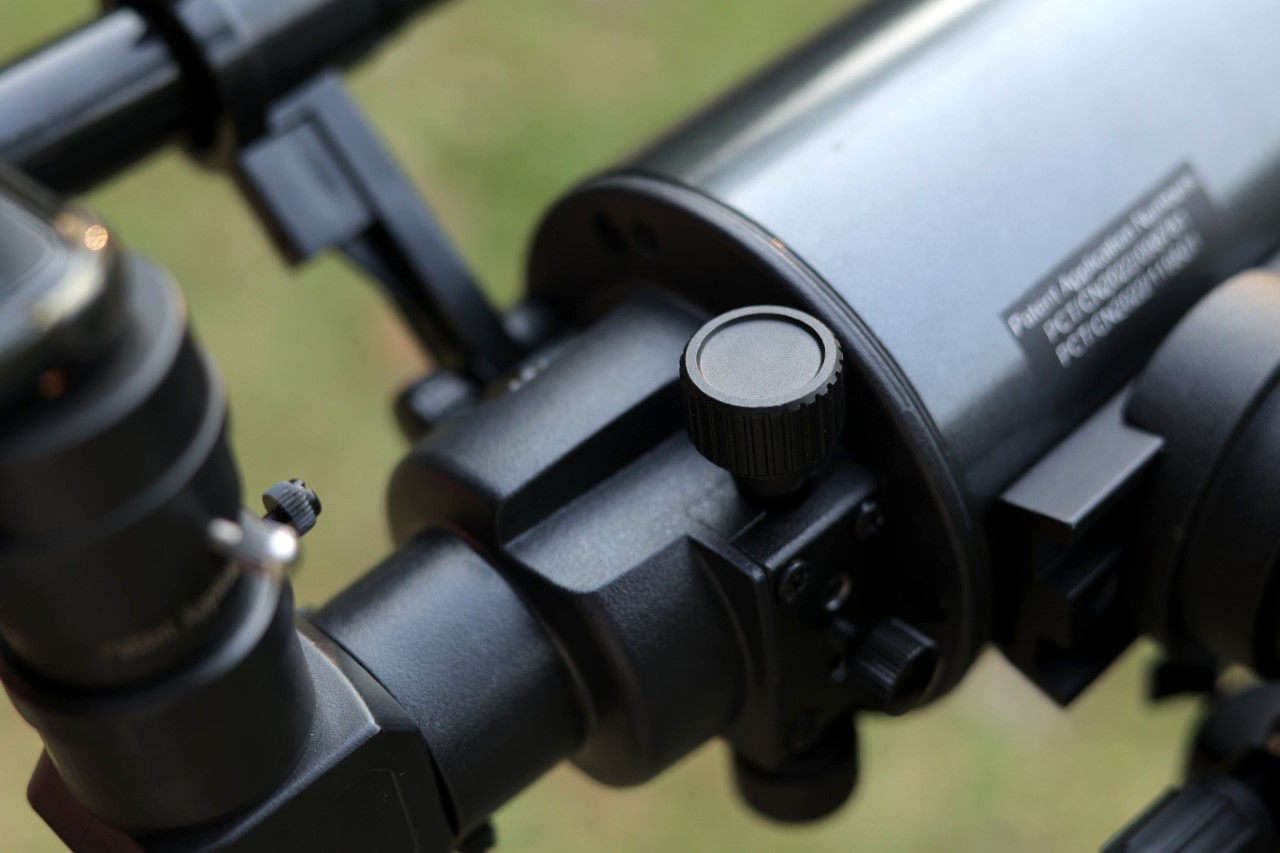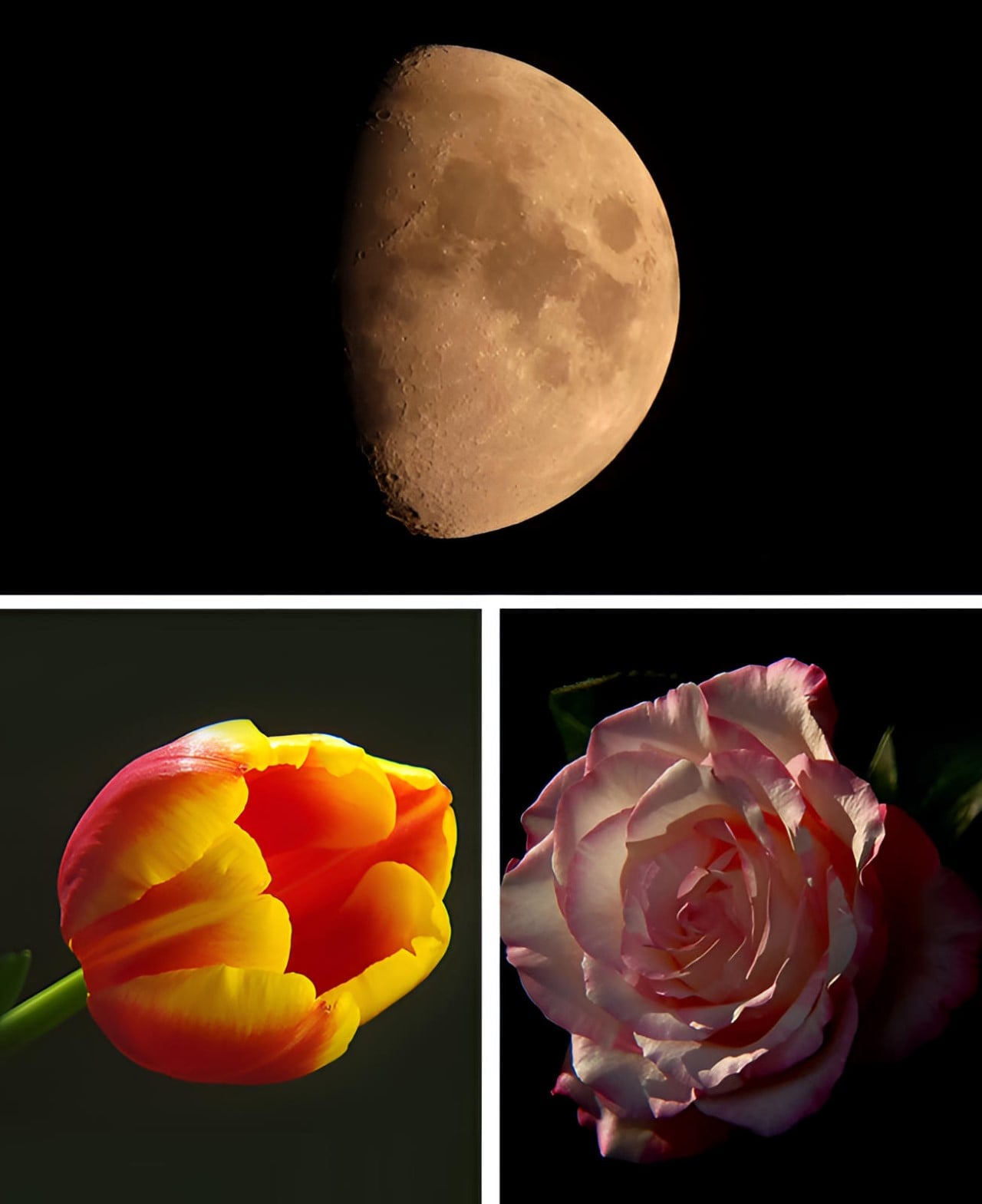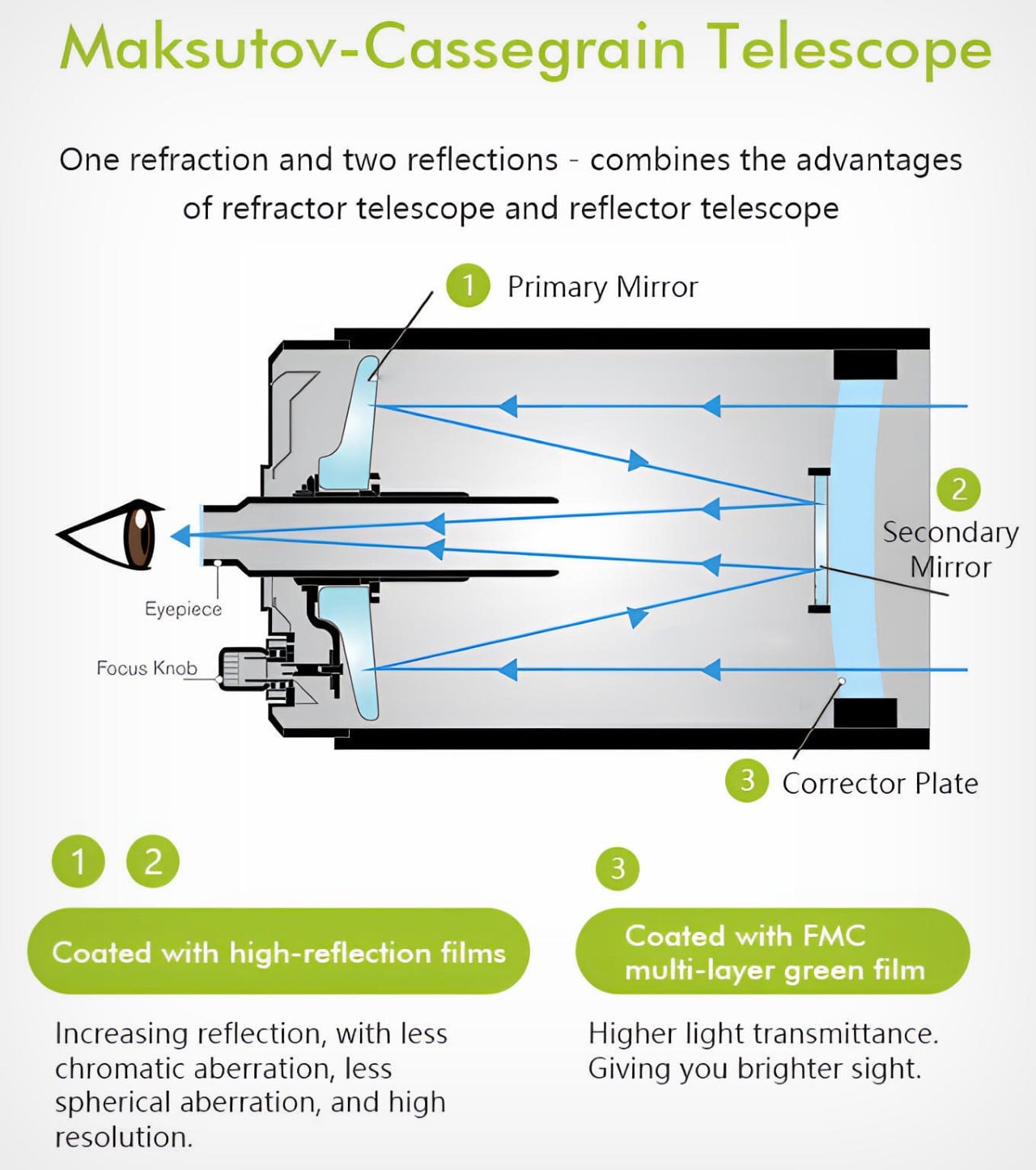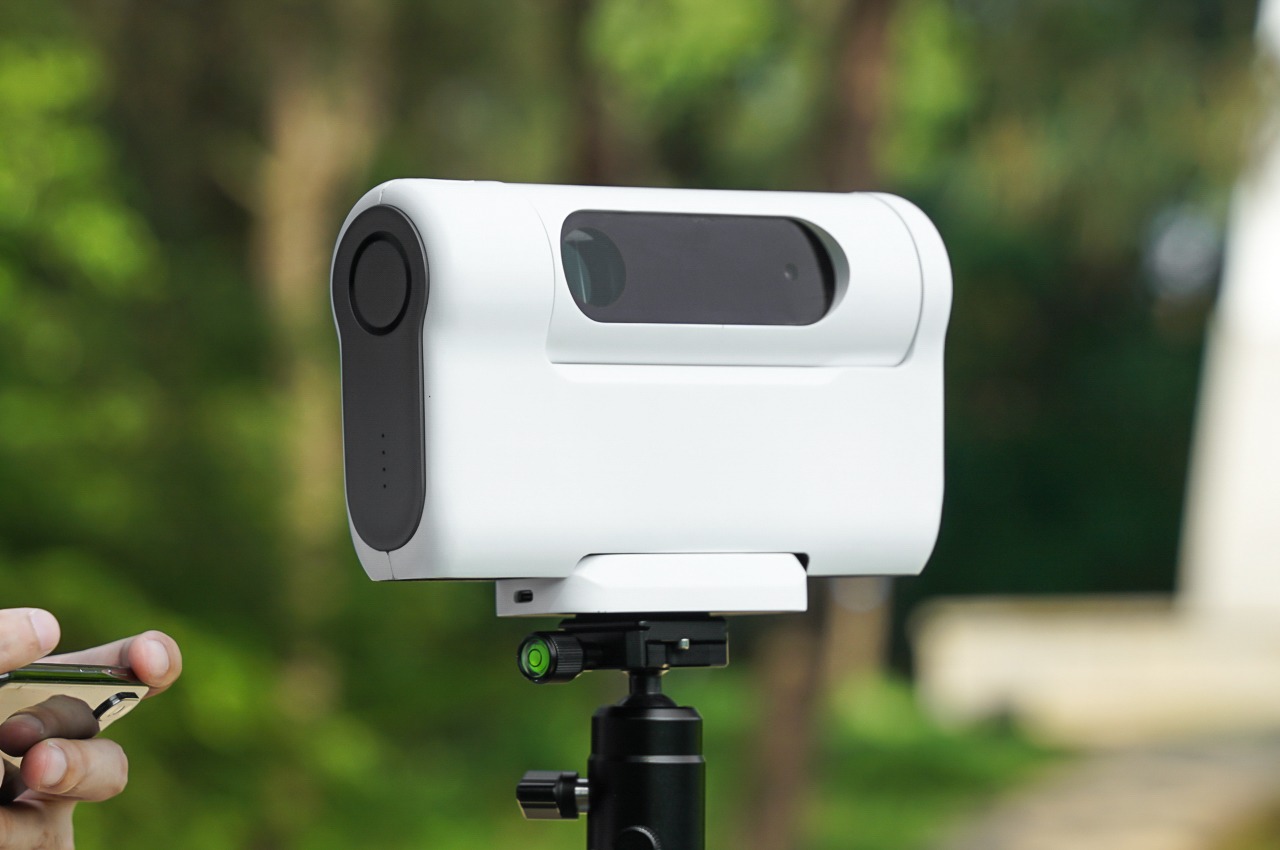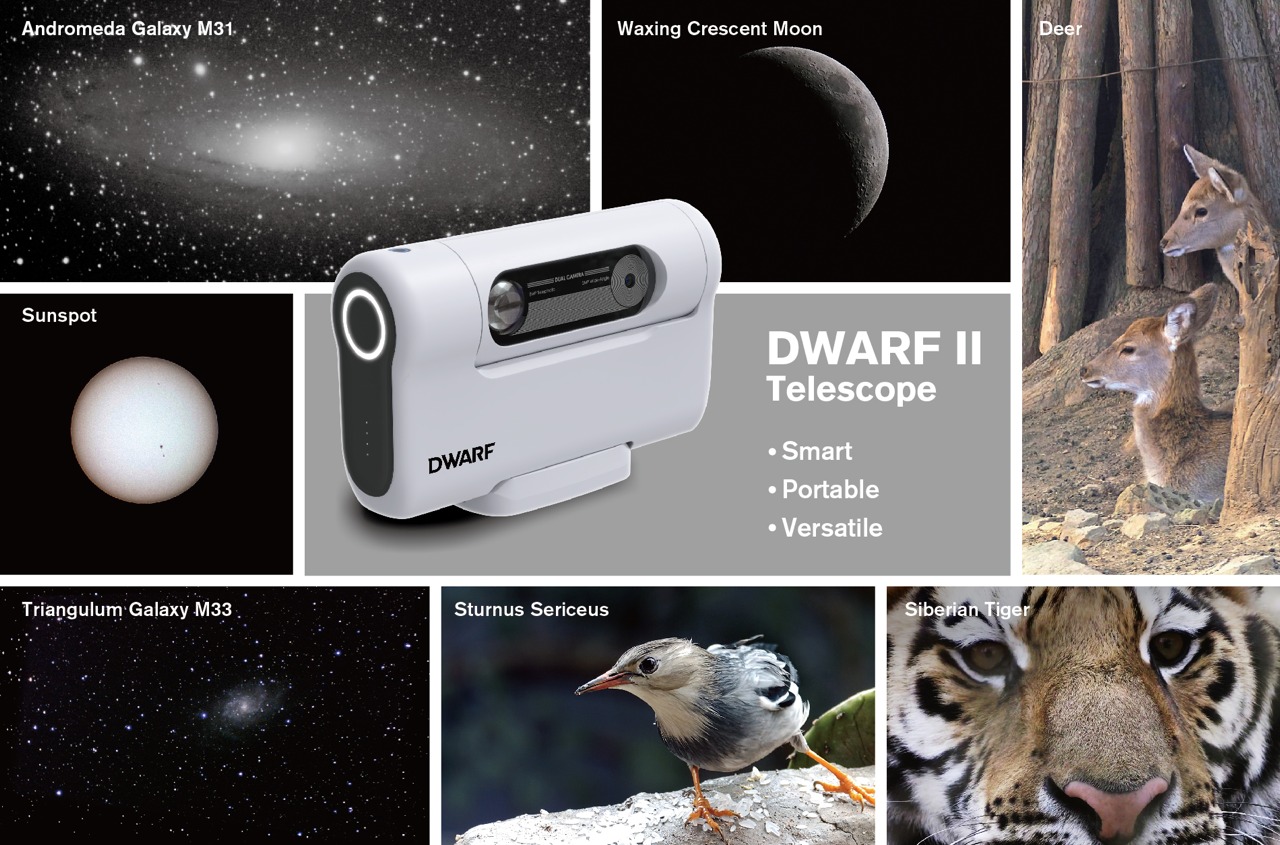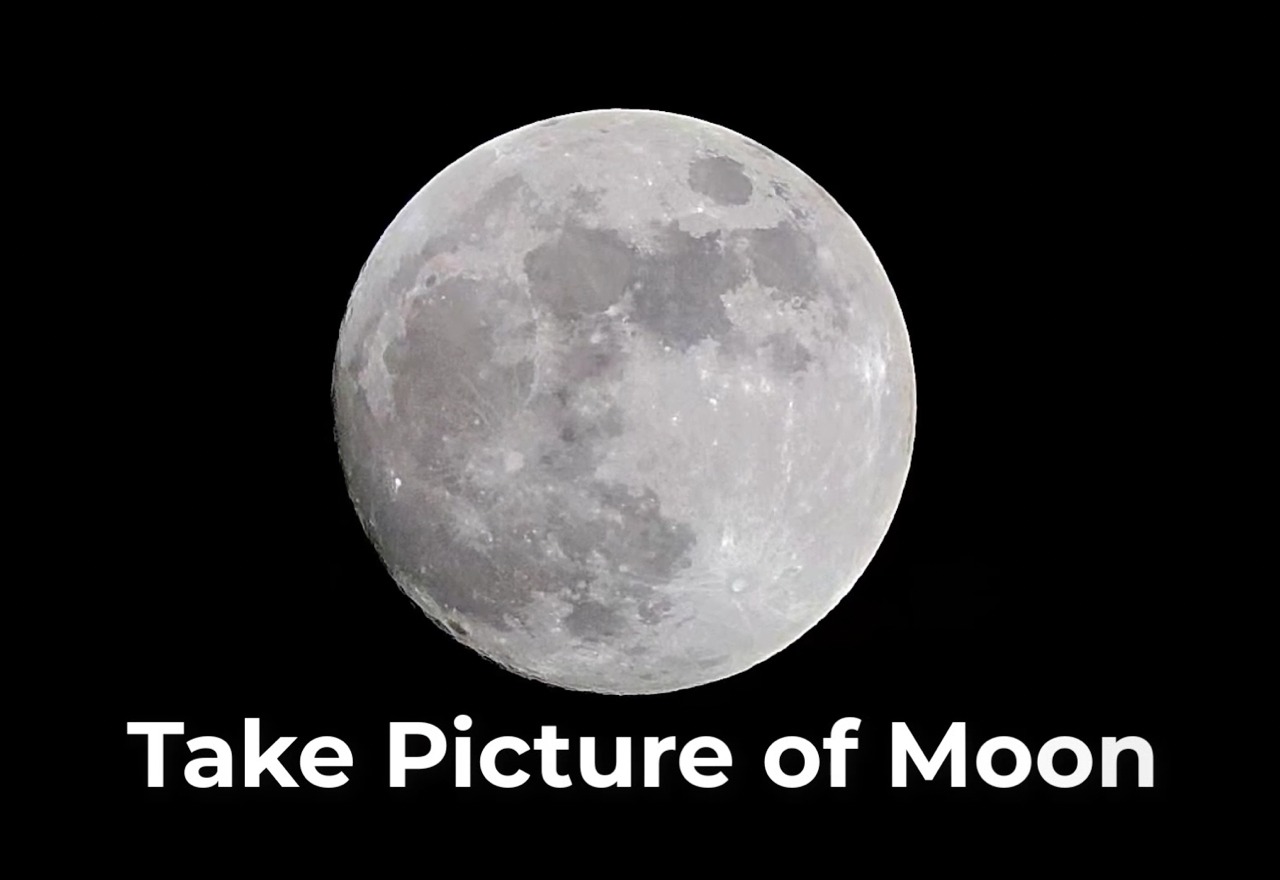For centuries, telescopes have been the gateway to the cosmos, allowing us to peer into the vast expanse of space and unravel its secrets. However, traditional telescopes often come with drawbacks – their bulky size and complex setups can be intimidating for beginners and hinder portability for outdoor adventures. Moreover, aside from their complicated nature, telescopes were just downright unaffordable to the masses… but technology always endeavors to make innovation accessible to everyone. Enter the DWARF 3, a revolutionary smart telescope that bridges the gap between cutting-edge technology and user-friendly design, making astronomy and nature observation more accessible than ever before.
Designer: DwarfLab Team
Click Here to Buy Now: $469 $499 ($20 off, use coupon code “YANKO” to get the additional $10 off at checkout). Hurry, deal ends in 48-hours!
The name DWARF 3 isn’t without reason, as it breaks from the norm of what we expect from a telescope. The name comes from its dwarfed design, which condenses the massive linear telescopes into something the size of a dictionary or novel – and it does so by borrowing a trick from smartphone camera designs. The DWARF 3 boasts a unique periscopic design, a leap forward from its successful predecessor, DWARF II (which raised over $870,000 on Kickstarter). Unlike traditional telescopes with a straight light path, DWARF 3 utilizes a prism to fold the light path, resulting in a remarkably compact and portable form factor. This innovative design allows the telescope to fit comfortably in a backpack, making it the perfect companion for stargazing trips, camping adventures, or even spontaneous backyard astronomy sessions. Despite its compact size, DWARF 3 packs a powerful punch when it comes to optical capabilities, quite like a smartphone’s camera does. By bending light in a different way that doesn’t need a massively long tubular structure, the DWARF 3 achieves telescope-grade zooming but in a small package.
That isn’t all the DWARF 3 borrows from smartphones – touted as a smart telescope, it’s designed to be entirely automatic and can remotely be controlled by a user. Whether for astronomy or nature photography, DWARF 3 is ready in minutes via a smartphone app, letting you capture the world around you in a bunch of ways. The DWARF 3 features a dual-camera system, catering to both wide-field observation and detailed target magnification. The wide-angle camera lets you preview shots before the telephoto camera allows you to zoom in on subjects, but also has the unique distinction of being wide enough to capture the entire Milky Way within one frame. An Astro Mosaic mode also lets the DWARF 3 capture and stitch together incredibly detailed panoramic views of the sky so you can zoom in on stars. The EQ mode, combined with the star-tracking feature, allows the camera to automatically correct for the Earth’s rotation and follow specific cosmic objects, eliminating the need to manually reset the camera’s aim. You can even set schedules, so the DWARF 3 kicks in at the right time to begin capturing the star you’ve set your eye on.
The true star of the DWARF 3’s optical system is the telephoto lens. A 150mm lens that actually has an equivalent focal length of 737mm, this lens brings distant celestial objects into sharp focus, inviting you to explore the cosmos with unprecedented detail, from the subtle textures of nebulae to the captivating lunar phases. But DWARF 3 isn’t just for astronomy enthusiasts. Nature photographers will find this telephoto lens invaluable. With its wireless control capabilities, DWARF 3 allows you to capture stunning wildlife images from a safe distance, ensuring minimal disturbance to the animals in their natural habitat. Whether it’s a majestic hawk soaring high above or a shy deer peeking out from a thicket, DWARF 3 helps you capture those fleeting moments of nature’s beauty in exceptional detail.

DWARFLAB App leads you to stunning shots on a single click. Designed with beginners in mind, the one-click shooting feature streamlines the process, ensuring effortless photography. At the same time, for advanced users, manual adjustments are still open for your precise control over every aspect of the shot.
DWARF 3 goes beyond simply providing magnified views. To elevate the user experience, it boasts a suite of intelligent features powered by cutting-edge technology. The autofocusing functionality utilizes a built-in step motor, ensuring crisp and clear images at all magnifications. This eliminates the need for manual adjustments, allowing you to focus on enjoying the view. For deep sky objects (DSOs), DWARF 3 employs a sophisticated object tracking system that leverages the power of deep learning to automatically track your target object. Simply select your target on the intuitive DWARF App, and the telescope will keep it in focus, even as it moves across the sky. AI-powered post-processing also allows the DWARF 3 to automatically reduce or remove noise from pictures (often a problem with low-light photography) while preserving celestial details, ensuring clarity and texture even when shooting in less-than-ideal conditions.
With the built-in Sky Atlas and top pick target suggestions, you can quickly identify worthy objects for observation and effortlessly begin your night sky imaging journey without any hesitation.
The DWARFLAB App serves as the central hub for controlling your DWARF 3 telescope. This user-friendly app, compatible with both Android and iOS devices, connects seamlessly to your telescope via Wi-Fi. Through the app, you can access a range of features, from basic camera control settings, image/video settings, and even time-lapse photography options. You can browse a virtual map of the sky and tell the DWARF 3 what to point at, and just in case you’re a noob like me, the app has its own recommended tab that tells you what cosmic bodies to watch out for, from nebulae to galaxies, stars, and even the Moon or Milky Way. The intuitive interface makes DWARF 3 accessible to users of all experience levels, allowing beginners to dive headfirst into the wonders of astronomy and experienced observers to unlock new levels of exploration. The app also lets you download images from the DWARF 3 onto your device, be it a phone or a tablet. There’s support for popular formats like JPEG and PNG, but the DWARF 3 can also capture FITS and TIFF formats (essential for preserving detail in those massive panorama photos).
On just a hardware and software level, the DWARF 3 packs quite a lot for a $469 telescope. Although catered towards both serious stargazers and hobbyists, the DWARF 3’s specs are solid. A 150mm telephoto lens (equivalent of 737mm) and a 6.7mm wide angle lens (equivalent of 45mm) offer the DWARF 3 a massive FOV range. A Sony IMX678 STARVIS 2 sensor captures precise imagery across a variety of shooting modes including regular photo, astro, burst, and time-lapse, along with videos at 4K@30fps or 1080p@60fps. For the image processing functions, the telescope has an NPU capable of 5 TOPS of processing power (an upgrade from the 2 TOPS on the DWARF II model). A 128GB eMMC comes included with the DWARF 3 for storing photos, and a whopping 10,000mAh built-in battery lets the telescope work for long hours, capturing massive panoramas or long-duration star trails. All this fits into a device that weighs 1.3 kilograms, works automatically, and outperforms most pro-grade camera setups that are 10 times the cost.
Click Here to Buy Now: $469 $499 ($20 off, use coupon code “YANKO” to get the additional $10 off at checkout). Hurry, deal ends in 48-hours!
The post The Tiny DWARF 3 Smart Telescope Can Track Stars, Capture The Milky Way with Gigapixel Resolution first appeared on Yanko Design.






